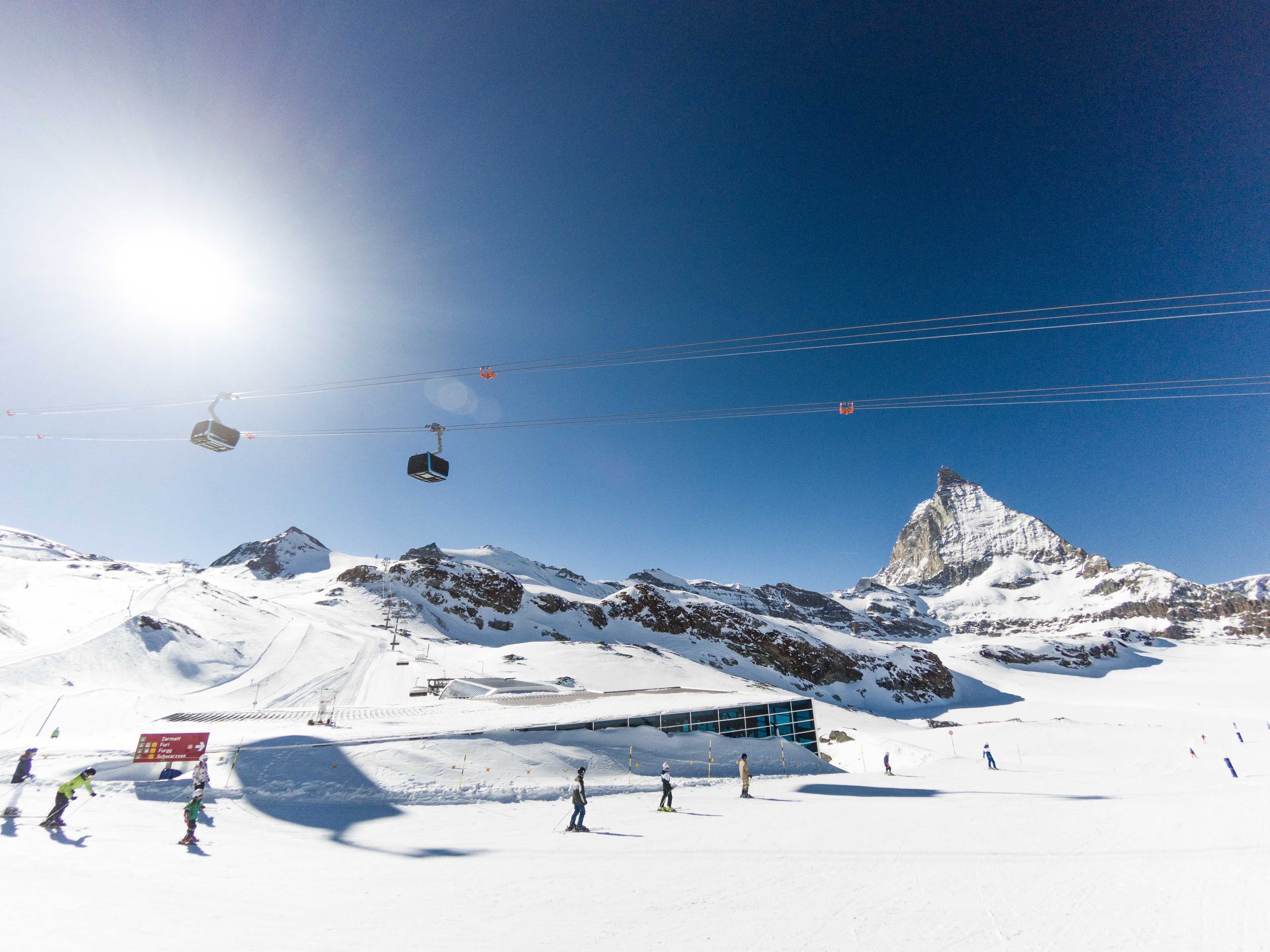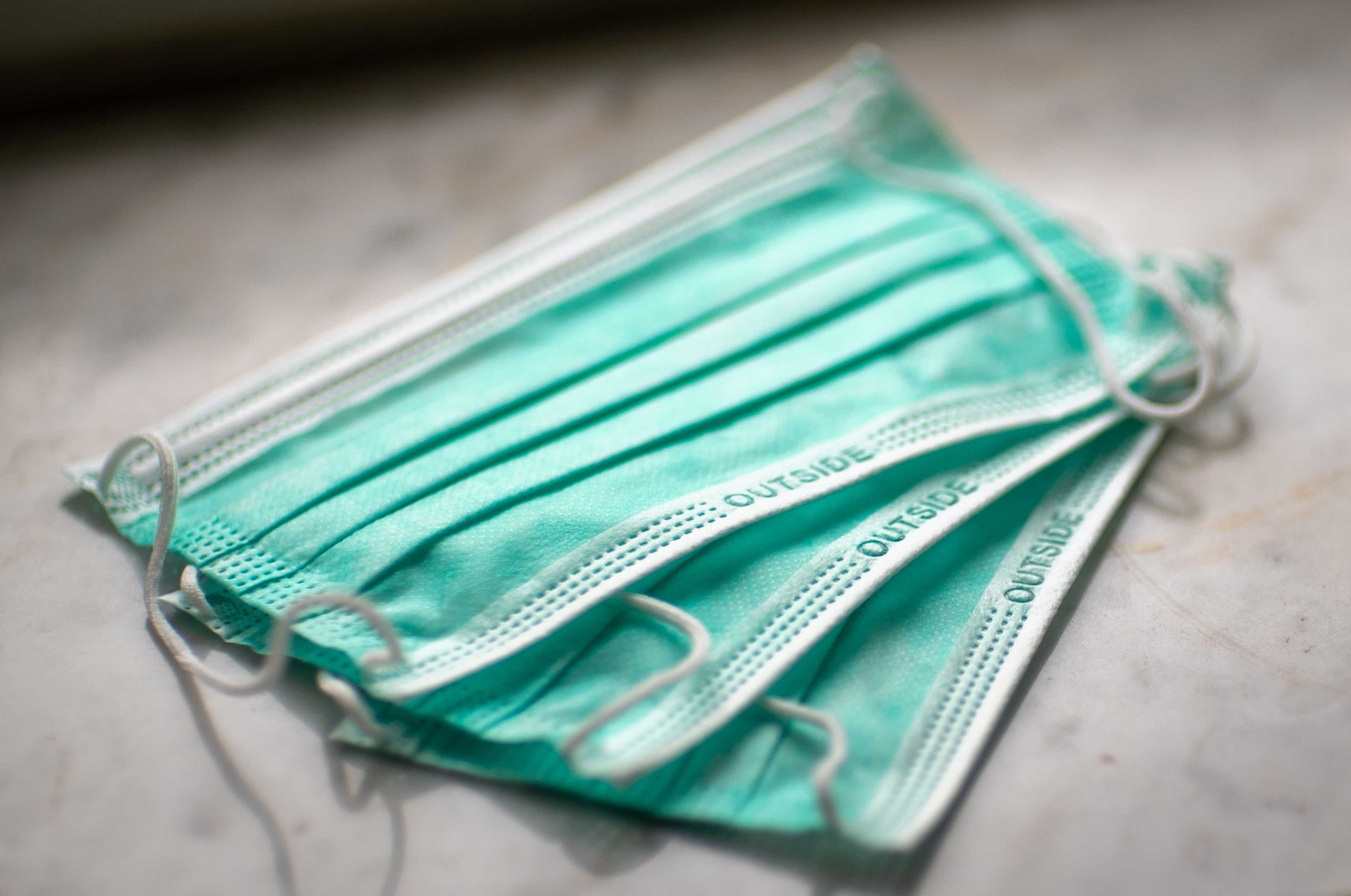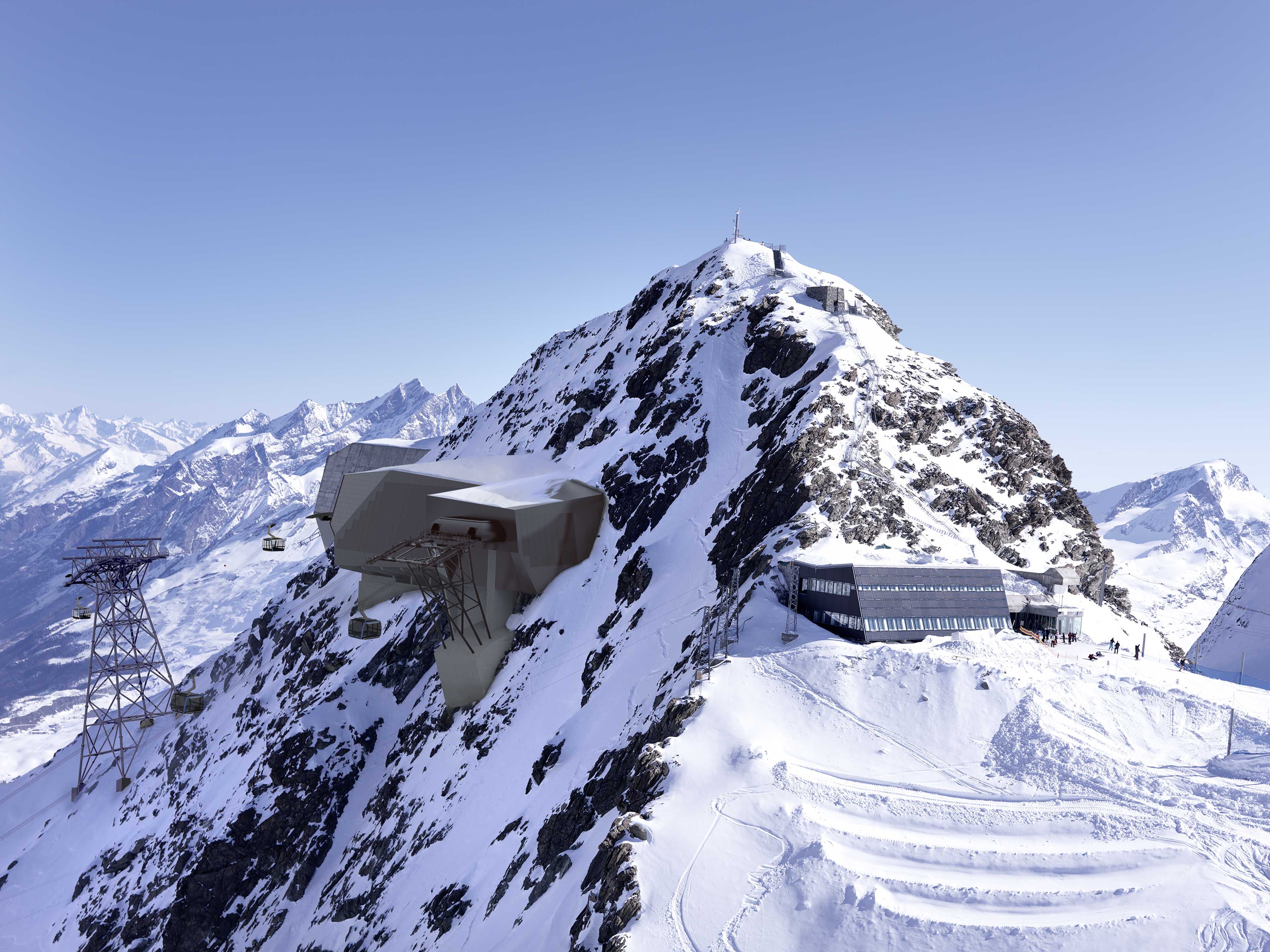As the highest situated resort in Europe, Zermatt-Breuil-Cervinia-Valtournenche is, on paper, quite the attraction for the ski enthusiast. The lifts on the Plateau Rosa glacier are open nearly year-round, and the thickness of snow cover rarely dips below a meter. Still, it remains an unpopular choice among skiers, and so we set out to find why.
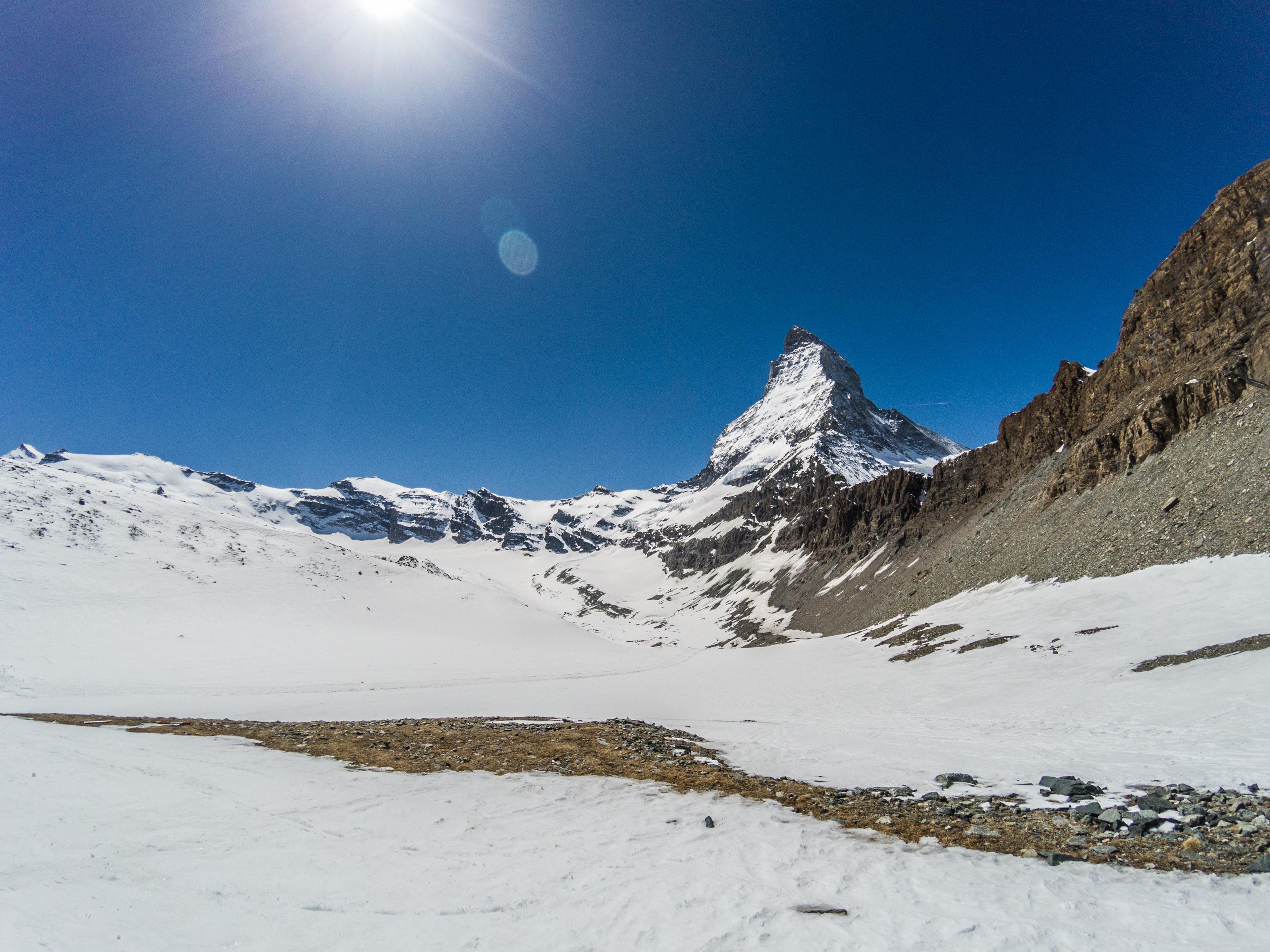
To this end we have visited Cervinia twice - first in the latter half of April and then again in August. For our first outing we have specifically targeted spring, as we felt the altitude of nearly 4000 m a.s.l. made it reasonable to expect low temperatures. We were not disappointed and April turned out to be an ideal time to bask in the friendlier aura and enjoy the still-excellent skiing conditions. The Valtournenche resort, connected to the Italian part of the region, was also open for the first few days.
Getting to Valtournenche and Cervinia
The Italian side of the resort is located in the Aosta Valley - the northwesternmost region of Italy. Close proximity to France is immediately apparent - there are two official languages present here, as first evidenced by the bilingual roadsigns. Getting here by car, however, is not your weekend joyride. The alpine roads are by neccessity serpentine, and winter tyres are mandatory from 15/10 to 15/04. One can shorten the distance involved through flights to Milan (190 km from Cervinia), Bergamo (230 km) or Turin (120 km). In our case, the starting point of the journey was Bologna. Regardless of the route chosen, the highway ends at Saint-Vincent, 30 km away from the resort. Due to the altitudes involved (Cervinia itself lies at 2000 m a.s.l.), the road is winding and tiresome. This can be partially mitigated should you choose to stay at the nearby Valtournenche, which lies at "just" 1500 m n.p.m. Travel difficulties are however rewarded by the environments themselves - the almost tundra-like flora, combined with panoramas of the highest parts of the Alps are so impressive that they are, by themselves, already well worth the trip.
Getting to Zermatt
Should you choose to stay on the Swiss side of the border, things get a bit more complicated. You can shorten the distace through a flight to Geneva or Zurich, but there is no getting to Zermatt by car or bus. Due to environmental concerns, only electric cars are allowed in the town proper, and even should you own or rent one, special permits are required. Other vehicles must be left at the nearby town of Täsch, where special infrastructure has been prepared for this occasion. Leaving your car at Matterhorn Terminal costs around 15,50 CHF per day, and from here you can get to Zermatt by train. However, for dealing with all these „nuisances” on the Swiss side of the border you are rewarded with peace, quiet, nature and clean air.
First impressions
The entire Zermatt-Cervinia-Valtournenche complex consists of about 320 km of trails of various difficulty. However, as soon as we lined up to buy our skipasses we hear a bit of bad news - the cable car to Plateau Rosa has been closed due to unfavourable atmospheric conditions. A bit surprised, I glanced at the perfectly visible peak of Matterhorn (known by Italians as Monte Cervino) and the nearby Plateau Rosa station, with nary a cloud in sight. When pressed for more information, such as when we could expect the cable car to open, the staff responded with a brief 'we'll open as weather permits, however we give no guarantees for Mother Nature'. As we were buying the skipasses for a whole week, we'd hoped that even in the worst-case scenatio we'd get to try out the Swiss side as well. It is worth noting that the skipass itself is not on the cheap side - in high season a 7-day skipass for the entire region carries a hefty pricetag of over 300 euros. You can also buy out a sport insurance with it, which might be worth considering, as the rate is cheaper than most insurers and it remains valid in the Swiss part as well.
We thus began our skiing on the relatively high piste of Pancheron (2949 m a.s.l.). There the difference between Cervinia and other alpine resorts immediately became apparent. It was the latter half of April, but the temperature was still -8 degrees C, the snow was firm and the piste well-prepared. Once we had the chance to get to know this part of the resort for a while, we noticed a green sign light up by the previously closed cable car, which we promptly made use of. As it turned out, at 3500 m a.s.l. conditions were less than ideal, in spite of the shining sun. Plateau Rosa at under -15 degrees and with incessant wind is certainly not for everybody. Due to its altitude and strong gales the Italian cableway is often offline, especially in the mornings. Over the next few days this situation occured several times. On the Swiss side, however, the infrastructure consists of less wind-sensitive T-bar lifts, so there is less chance of getting 'stranded', but even those ended up shut down on one occasion, forcing us to return via a cable car to Klein Matterhorn (3883 m a.s.l.), from which we could ski down to Plateau Rosa and back across the Italian border.
The main attraction of the resort thus becomes its curse - the infrastructure in the upper parts is frequently closed down. With a spell of bad luck one might end up unable to get to the swiss side where 60% of the slopes and lifts are. The resort makes clear that this is in no way grounds for a refund. It's obvious why, but in order to avoid disappointment we recommend paying close attention to weather forecasts and frequently checking up on the resort's website prior to arrival.
Slopes
There is a large selection of slopes to choose from here. The ones on the Italian side are typically of easier difficulty (with a few exceptions). We have especially fancied Valtournenche trails no 1 and 6, which, though lower situated, were decidedly pleasant. The blue routes at and around Plan Maison, on the other hand, are winding and not neccessarily suitable for beginners for whom Salette in Valtournenche seems like a safer bet to practice technique. On the Swiss side, skiing begins at Plateau Rosa – Testa Grigia, from which the only way further is a blue route no 73 to Trockener Steg. Be prepared to make use of your ski poles, but your ordeal will be rewarded with access to about 150 km of slopes beyond. Trockener Steg is one of several hubs in the swiss part where multiple slopes and lifts meet. From here we can also access the highest-situated part of the resort – the peak of Klein Matterhorn (3889 m a.s.l.) and the year-round area of Matterhorn Glacier Paradise, from which one can ski down to Plateau Rosa, as mentioned previously. There are a few T-bar lifts on the plateau, including one alongside the noted route 73 - unfortunately, it drags on as much as the route itself. The Matterhorn Glacier Paradise area proper consists of over a dozen kilometers of routes, open the whole year. Although the routes themselves are neither especially long nor demanding, they nonetheless remain an interesting curiosity for ski enthusiasts, more on which later.
In Switzerland, aside from the peak of Klein Matterhorn (Trockener Steg, Schwarzsee, Furgg and Furi) we have at our disposal two others – Rothorn (3103 m a.s.l.) and Gornergrat (3089 m a.s.l.). The former is characterised by its rather difficult slopes, some of which are completely unprepared freeride zones. Gornergrat, on the other hand, is perhaps most famous for the fact that you get to its top via... a train. Should you be in the area, we highly recommend giving it a try - it's free for valid skipass holders, and both the train itself as well as its stations are fully geared towards skier transit. The routes in the Swiss part of the resort are aimed chiefly at above-average skiers, and there is little to do here for beginners. Outside of the freeride areas, marked in orange on local maps, there is also a single (though really good) black route.
Each of the three peaks offers a breathtaking view of the Alps, with a clear view of the Matterhorn and Mont Blanc. The sights on offer are certainly one of the highest points of Zermatt-Cervinia - virtually no other resort offers vistas this spectacular.
The longest uninterrupted ride, via routes no 85, 88, 7 (the fantastic Ventina) and 13 to Cervinia is over 11 km long. Some sources note a 22km ride to Valtournenche exists, but we have been unable to find it – you can only get to Cime Bianche in Valtournenche by a short chairlift. Nonetheless, getting to Cervinia all the way from Klein Matterhorn is an interesting experience, with an altitude difference of over 1800 m.
Infrastructure
There are over 50 different ski lifts in the resort. On the Italian side, the lifts are decidedly older (mid-90s). The cable car cabins of the Laghi Cime Bianche-Plateau Rosa line have been recently modernised, others are noticeably aged, though are usually equipped with windshield bubbles and still offer comfortable and swift travel. As a result, queues are rare and the occasional spikes in traffic are promptly offloaded.
The Swiss infrastructure is noticeably more modern. The main communication artery is the long (nearly 7km) gondola lift of Matterhorn Express leading from Zermatt to Trockener Steg through several intermediate stations. Nearly all lifts have bubbles and disengage on the stations for easy access, though there are some built in the '60s and '70s running alongside the gondolas to Trockener Steg and then to Klein Matterhorn, where the station has been drilled into the mountain itself - the trails are located on the opposite side of the mountain, where you get on foot through a tunnel. Said tunnel additionally hosts an elevator leading to an observation deck located at nearly 3900m a.s.l. The glacier is also home to the highest-situated european snow park.
The 2018/2019 season is currently slated for the opening of the worlds highest 3-S gondola lift leading from Trockener Steg to the iceberg's highest point - due to singular conditions the already advanced works can only take place on 120 days of the year. Construction runs parallel to a well-worn lift from the '70s.
There are a few restaurants and bars in the resort area, serving local delicacies and a bevy of beverages, alcoholic and otherwise. Swiss prices are almost double the Italian ones, but euros are accepted for skiers' convenience. Most locales in Zermatt also accept credit cards, which sadly cannot be said for the ones situated in Cervinia and Valtournenche.
Accommodation facilities available in Cervinia are typically construction from the '70s and '80s. Despite that, prices remain considerable, especially in high season. Successive parts of the hotel infrastructure are periodically renovated, driving prices even further up. Cheaper lodging is available mostly in the form of older, characteristic concrete aparthotels in the Cielo Alto, as well as the Giomein apartments, both with direct access to the pistes. Quality leaves something to be desired, sadly, with several buildings rather reminiscent of soviet bloc architecture. Thankfully, all of this is easily compensated by the breathtaking surroundings. Choosing to stay at a newer, 3-star hotel we can expect to pay over 100€ (or even 200€ in season) for a double bedroom, though the price typically includes access to a pool, a spa and half- or full board alimentation. The town doesn't otherwise have much to offer apres-ski - a few restaurants, a bar. Shopping can be done at the local Crai supermarket, which is virtually the only store in the area.
A cheaper alternative is to stay at the nearby Valtournenche, where several hotels offer more attractive conditions. Unfortunately, getting to the Salette station involves taking a car or a bus. Pay attention to the opening dates of the various parts of the region, as the Valtournenche area is offline in the beginning and towards the end of the season, forcing skiers to drive or take the local bus for a several kilometer long trip to Cervinia, to the detriment of comfort.
Zermatt, on the other hand, is mostly luxurious hotels and comfortable apartments. Prices are not dramatically higher than in comparable lodgings in Italy, but overall the offer is noticeably geared towards more affluent clientele. In this case the cheaper alternative is the town of Täsch, connected to Zermatt by train.
Season
Zermatt-Cervinia is one of the few resorts in Europe that are open nearly year-round. The 'winter' skiing season here begins in October and lasts until May. In summer, the glacier offers skiing from June to September. In Italy there are two months per year dedicated to maintenance.
My second, August visit in Cervinia was aimed precisely at enjoying the glacier and summer skiing. Sadly, I have arrived to find the T-bar lifts on Plateau Rosa closed down due to poor atmospheric conditions (sic!). The glacier itself, however, was open for business, and so I've had the distinct pleasure of witnessing a one-and-a-half meter layer of snow in the middle of summer. In the lower situated parts of the area several hiking trails had been opened, as well as a bike park for cycling enthusiasts. The hiking, as it turns out, can easily be more exhausting than the skiing. The area is huge and the views phenomenal, but preparation is key - due to the altitude, ascent should be measured to allow the body to get used to the lower air pressure. Proper clothing and shoes are also highly recommended - despite the summer months, sensed temperature at Plateau Rosa was well below 0 degrees.
The Zermatt-Breuil-Cervinia-Valtournenche resort will begin the winter season with two pilot weekends of 14-15/10 and 21-22/10. It will remain open for skiers from 28.10 until 06.05. We highly recommend checking beforehand which parts of the region will be open or scheduled to be open (marked yellow).
Summary
Zermatt-Cervinia is the highest ski resort in Europe, open for winter sports nearly year-round - from autumn to May. But its location and altitude also means no guarantee of favourable weather, which in turn poses a risk of many of the pistes being closed to skiers. Conditions are also particular - these are no sunny Dolomites, and temperatures below -30 degrees can be expected. Despite the average infrastructure, however, Zermatt-Cervinia remains one of the most unique places I've ever had the pleasure of skiing at.
Resort ideal for: intermediate and advanced skiers and freeride afficionados.
Pros:
- great conditions and the possibility of skiing on natural snow even is spring and autumn
- around 320 km of ski trails
- gorgeous, unique vistas
- possibility of heliskiing (Italy), large freeride zones (Switzerland)
Cons:
- connections with Switzerland often closed due to atmospheric conditions
- high prices
- obsolete infrastructure in places
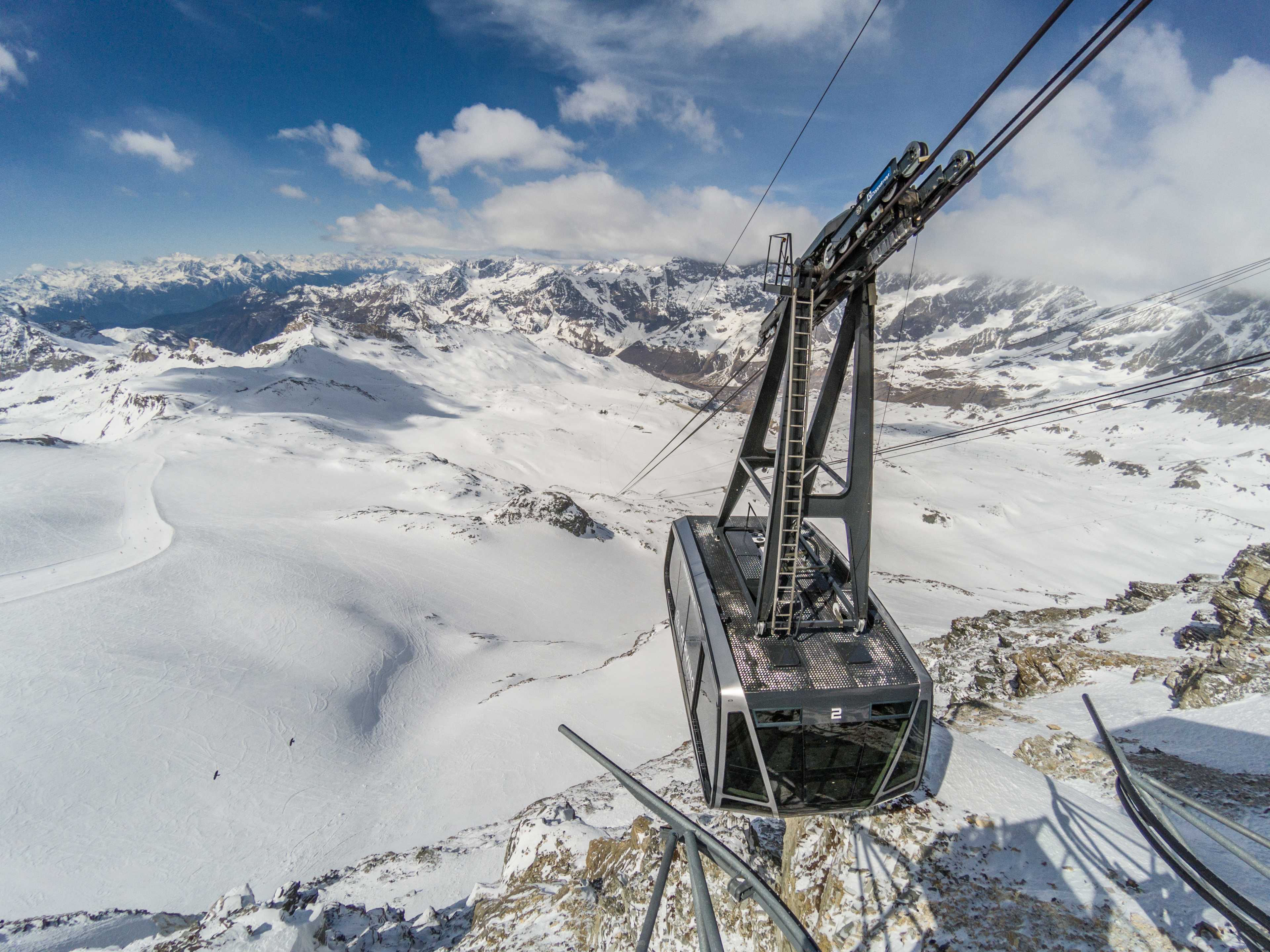
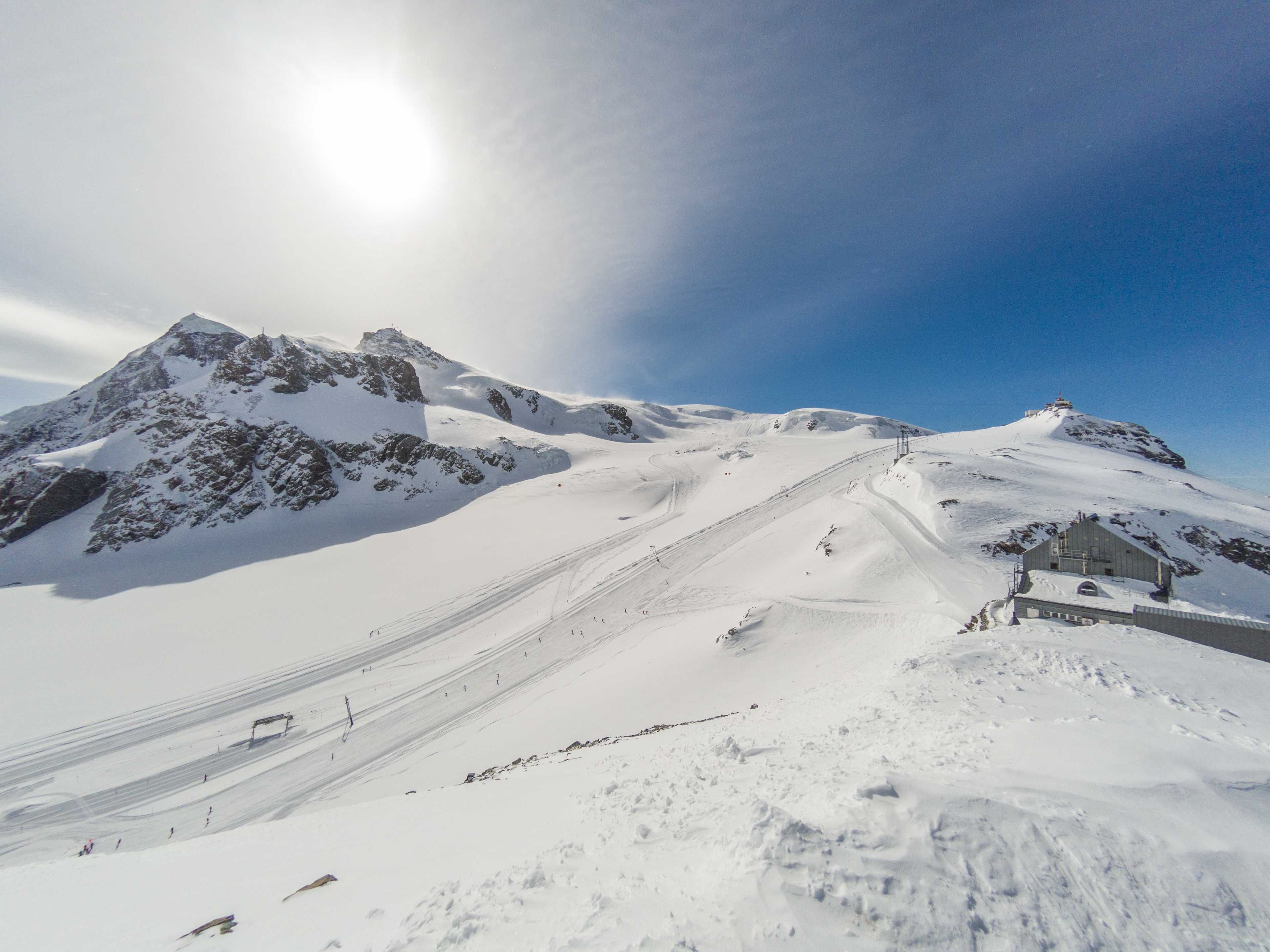
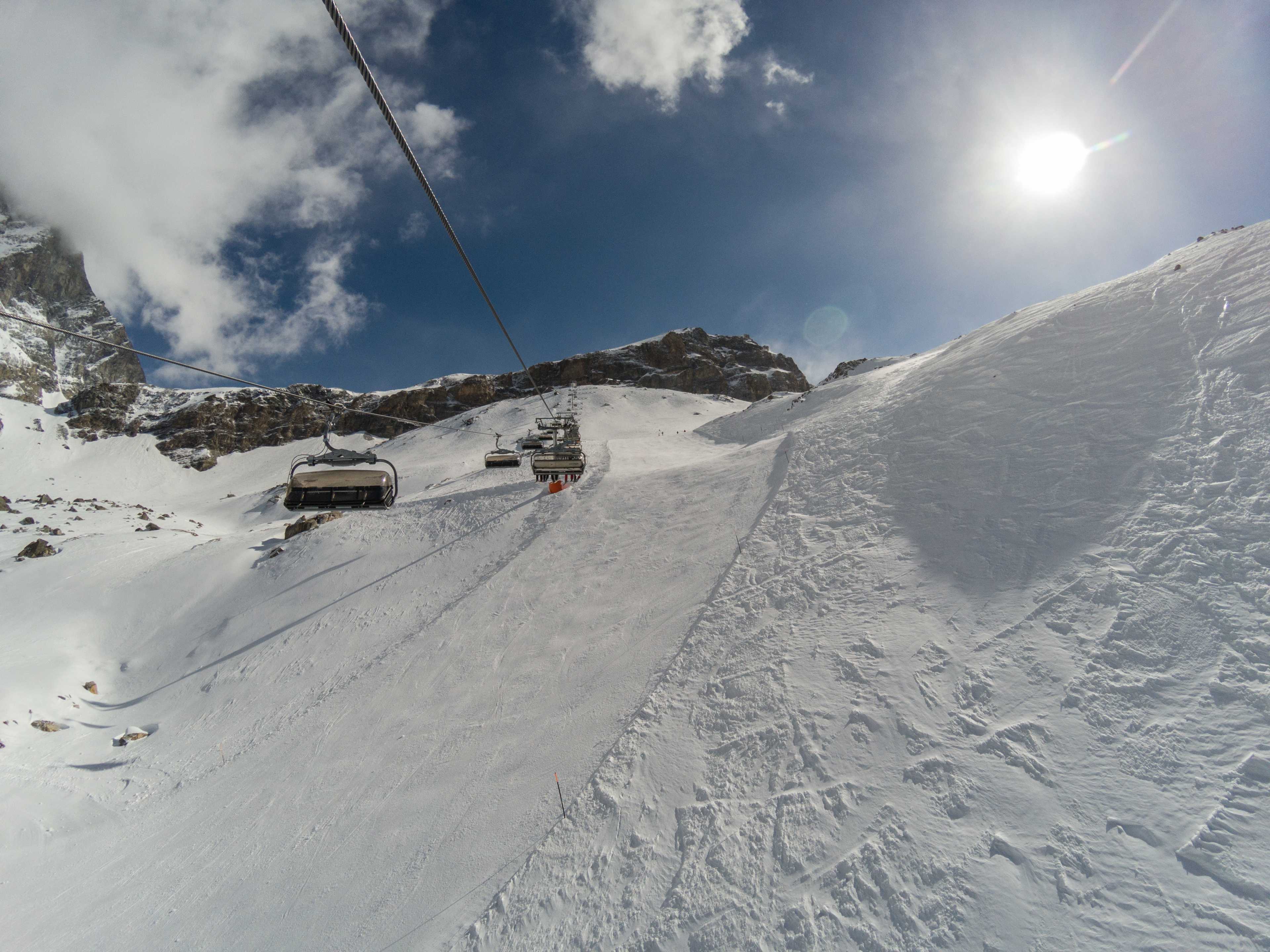
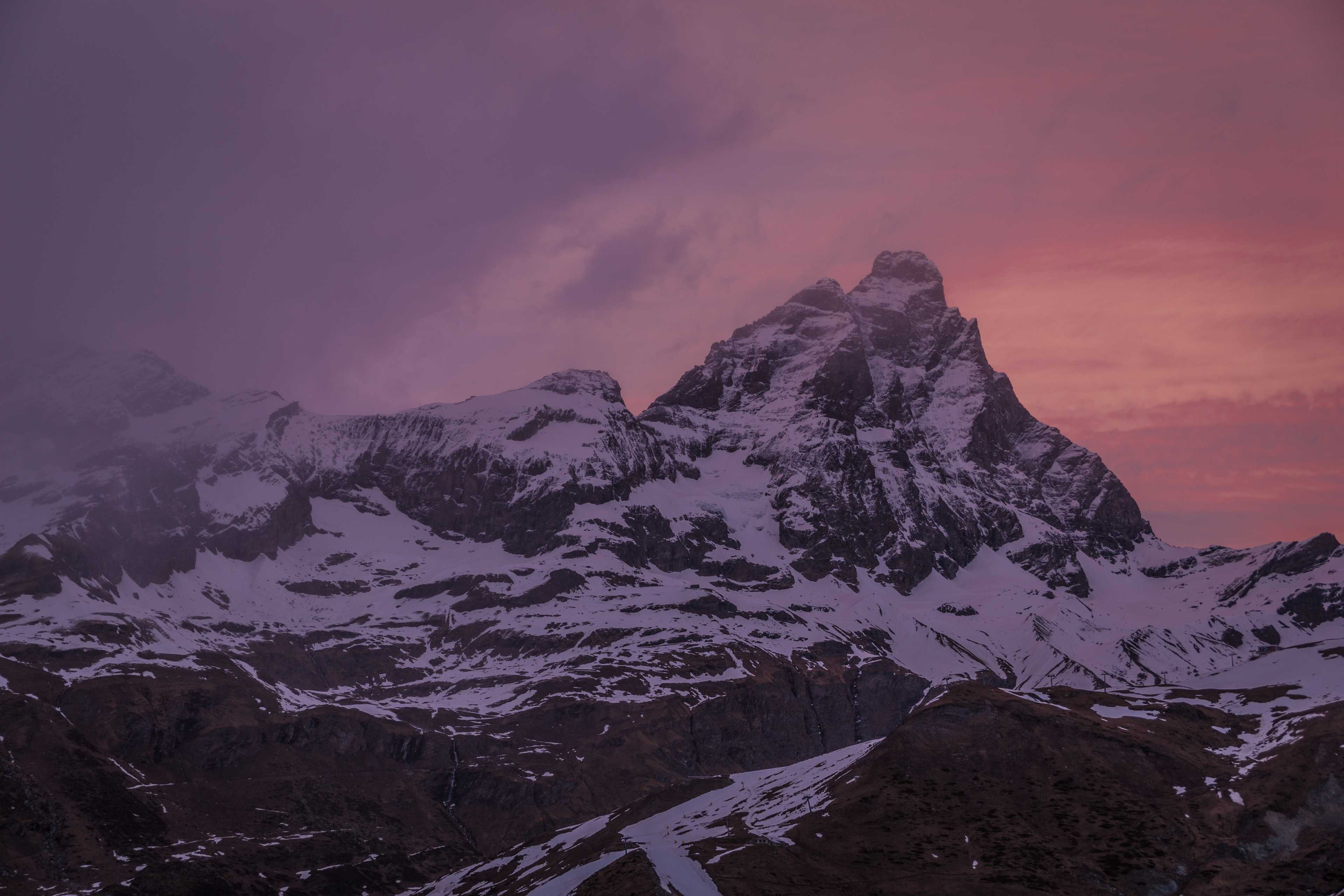
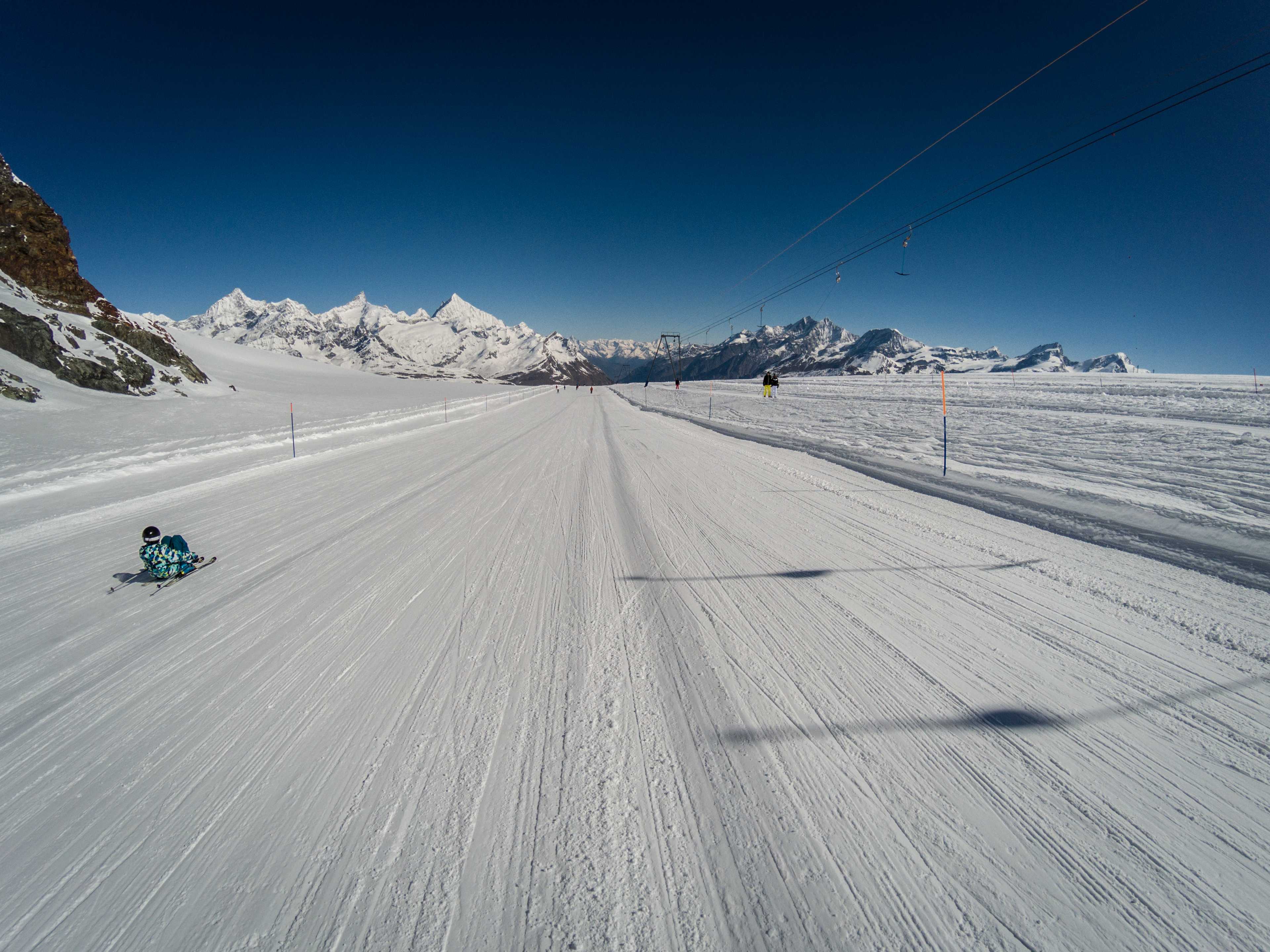
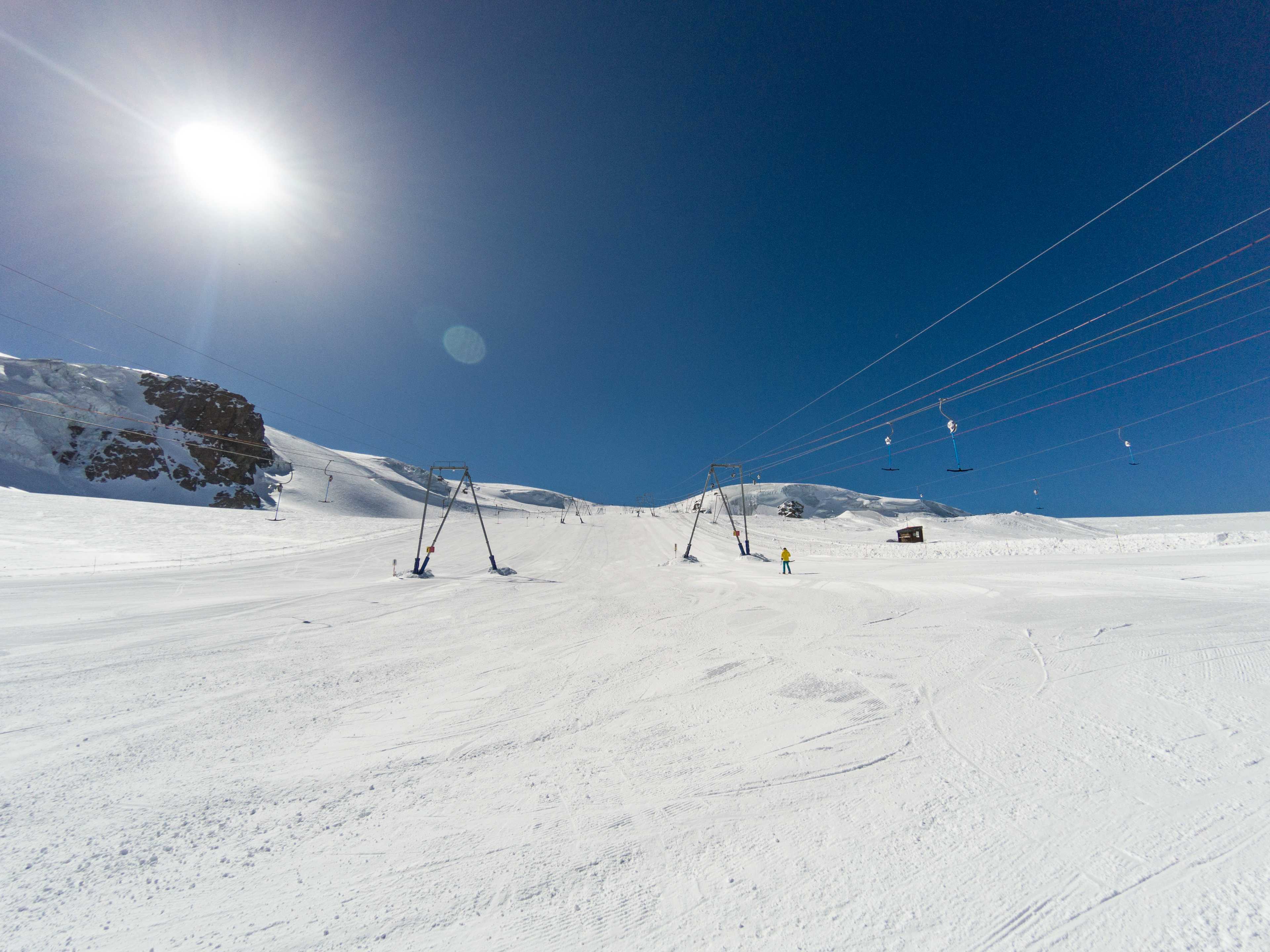
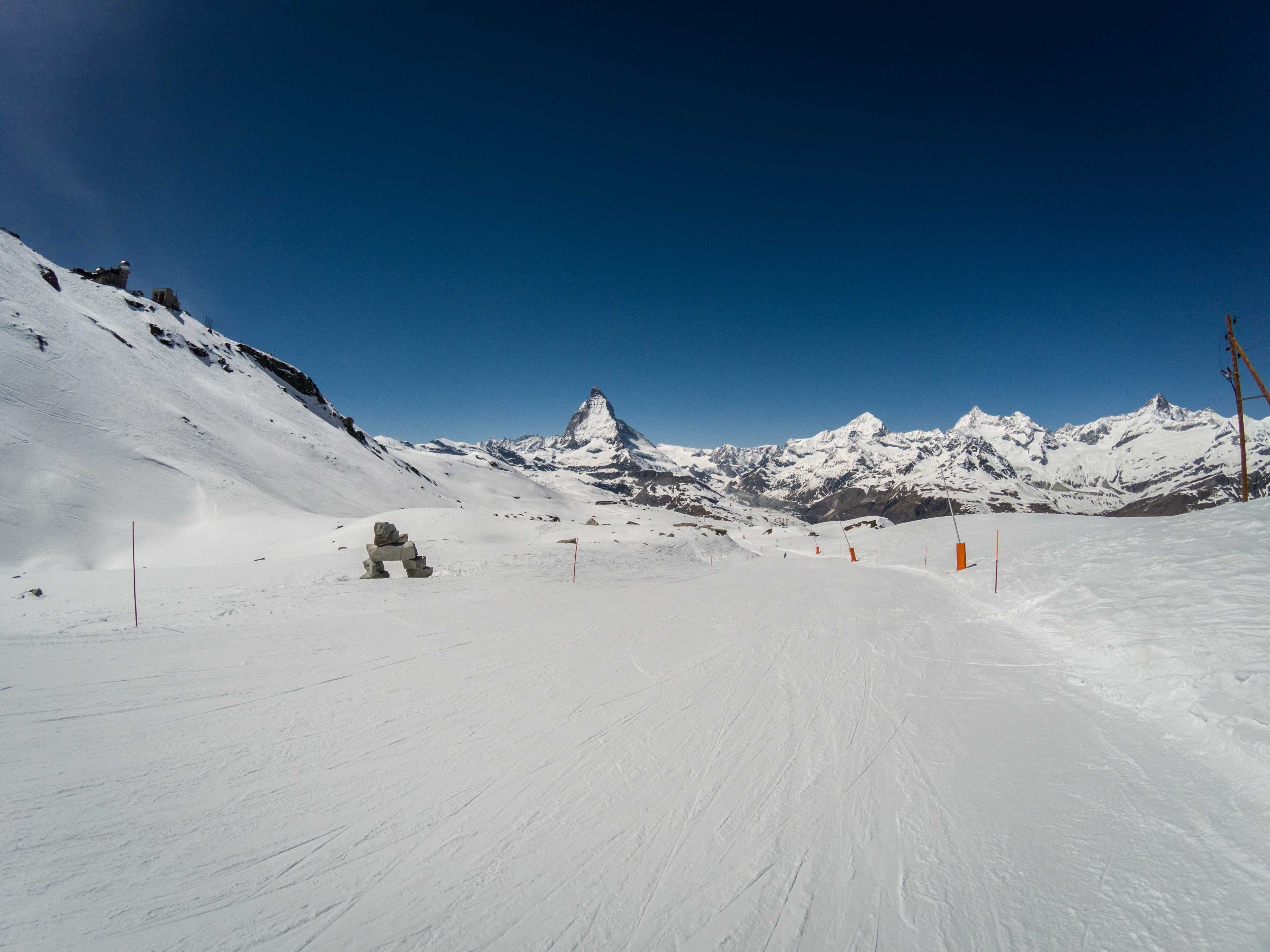
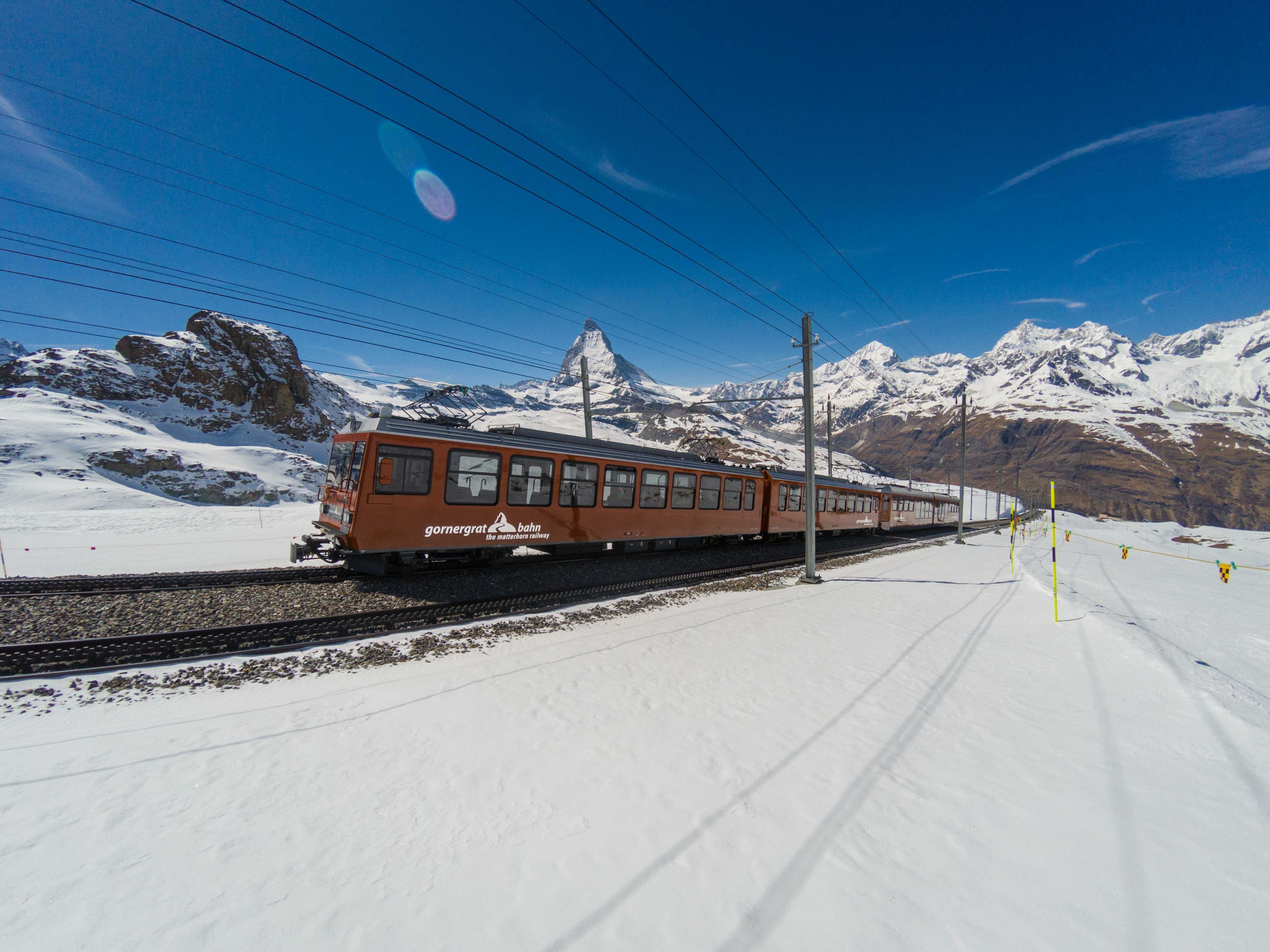
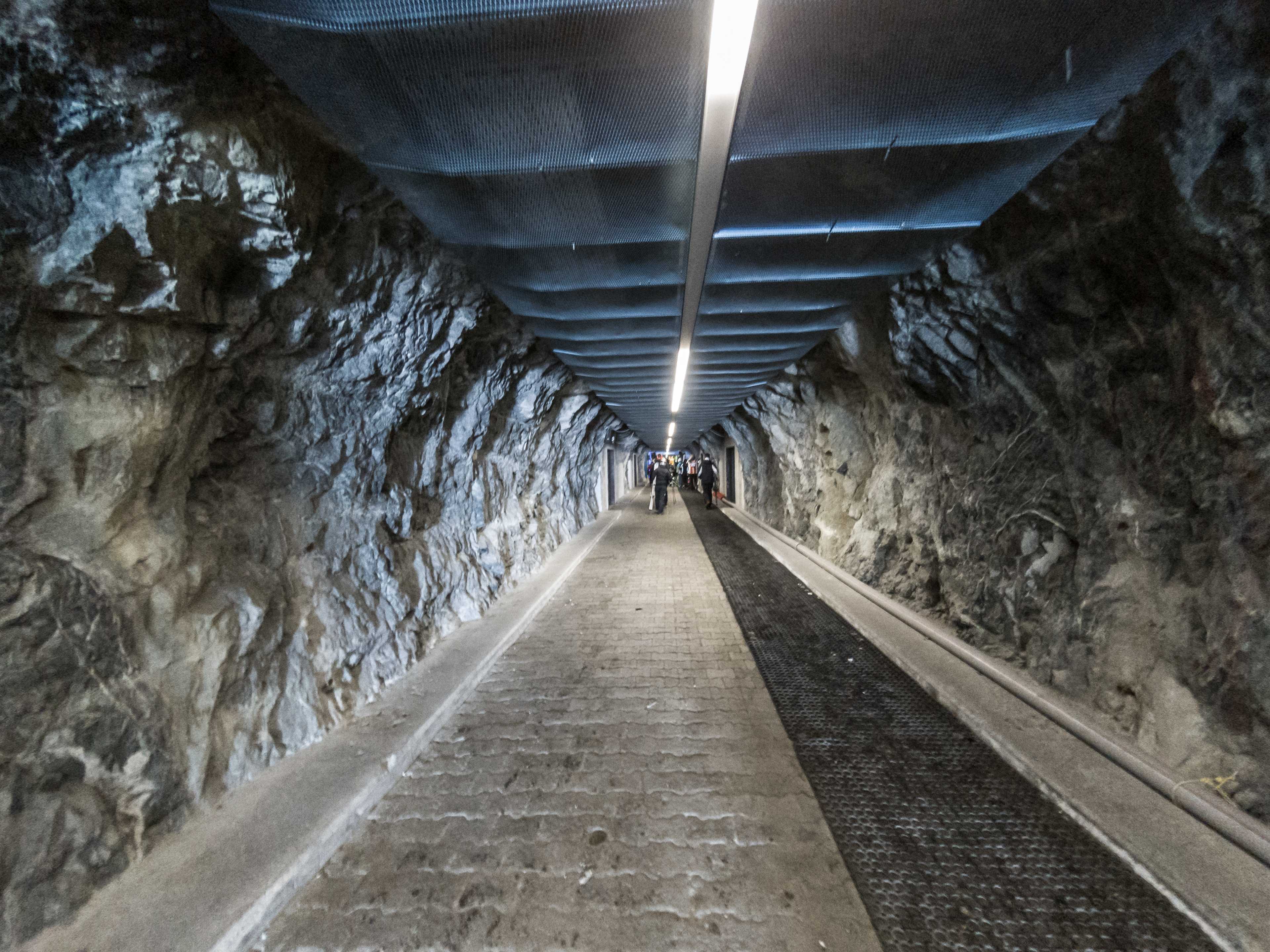
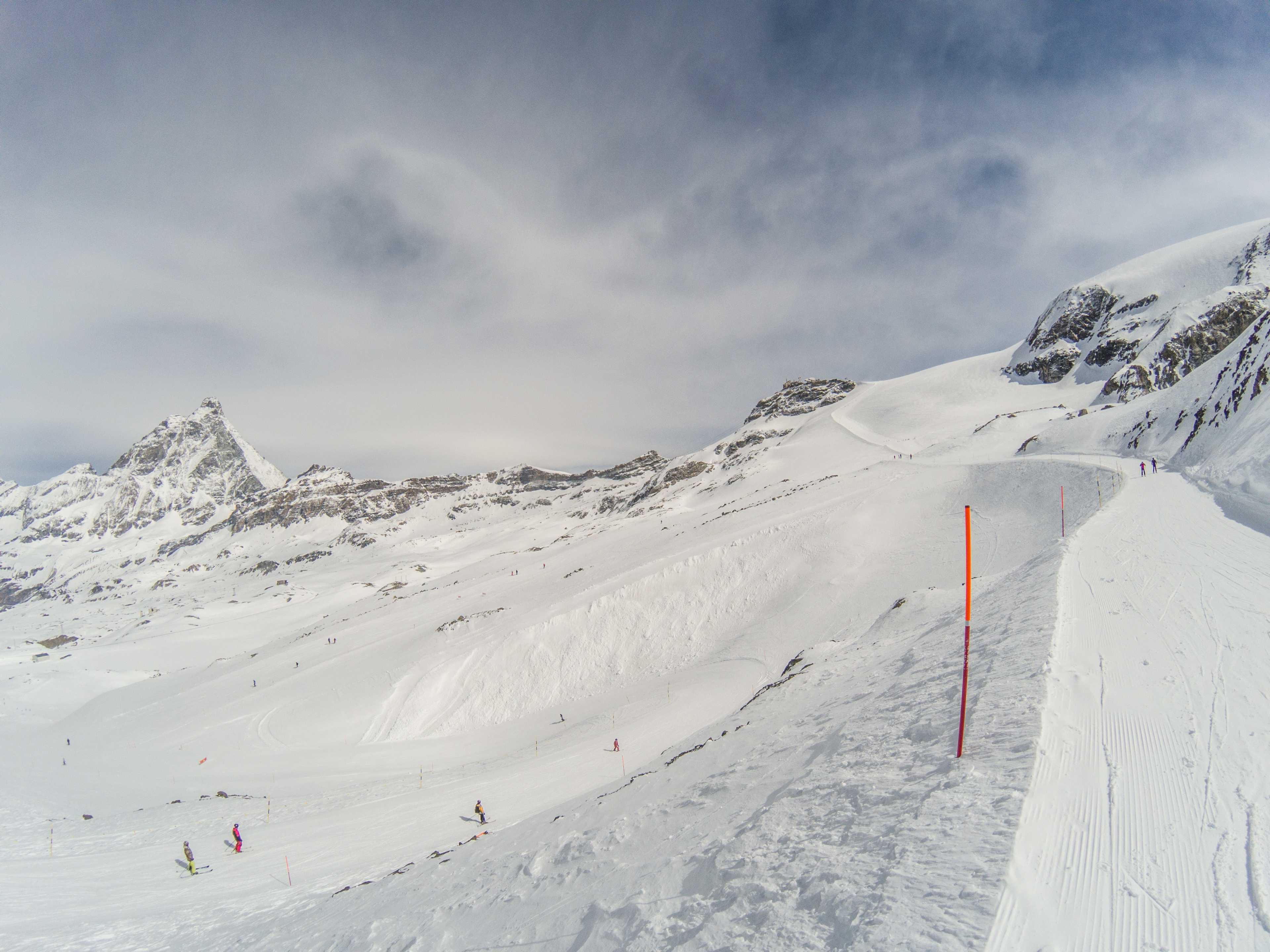
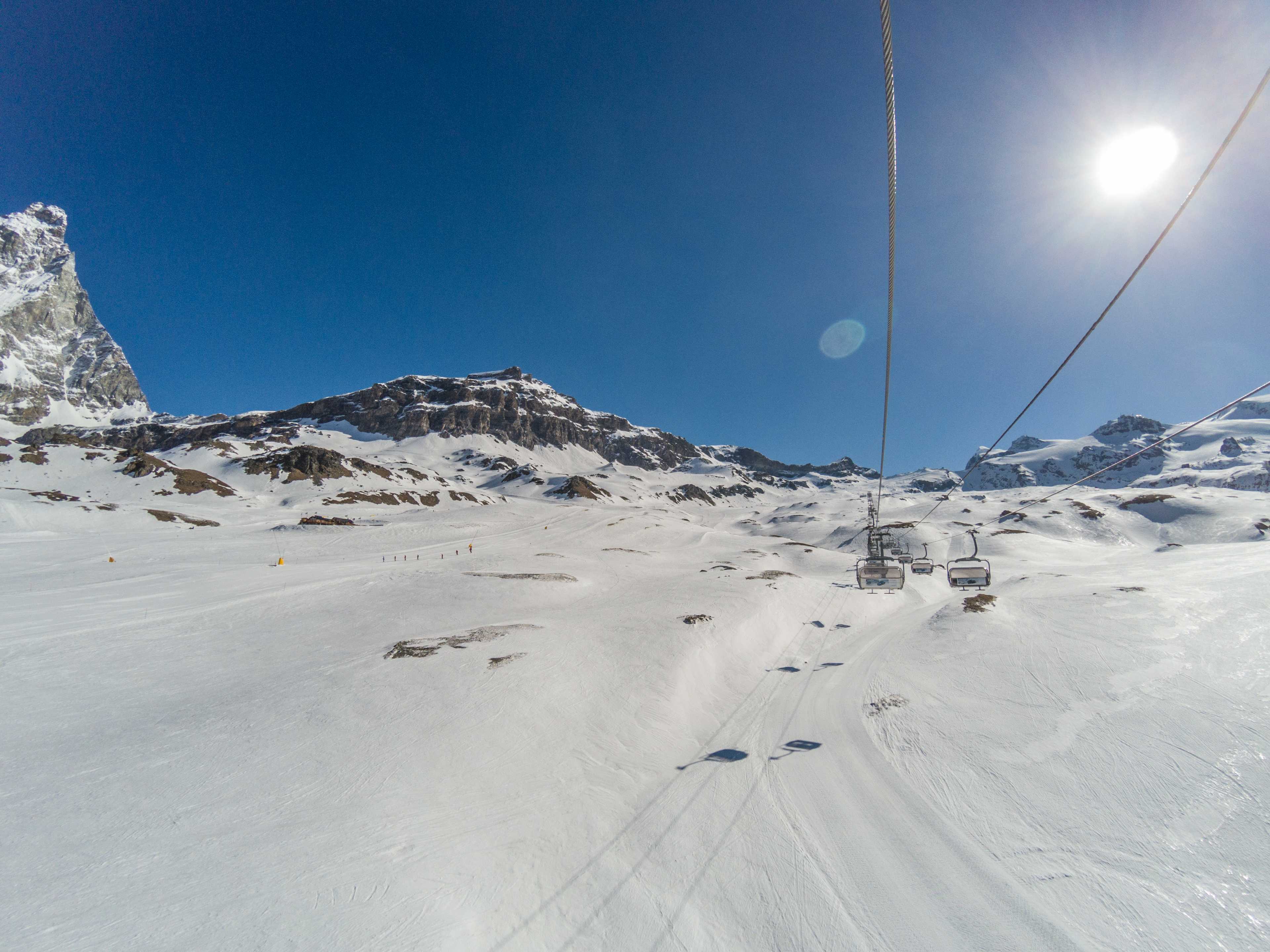
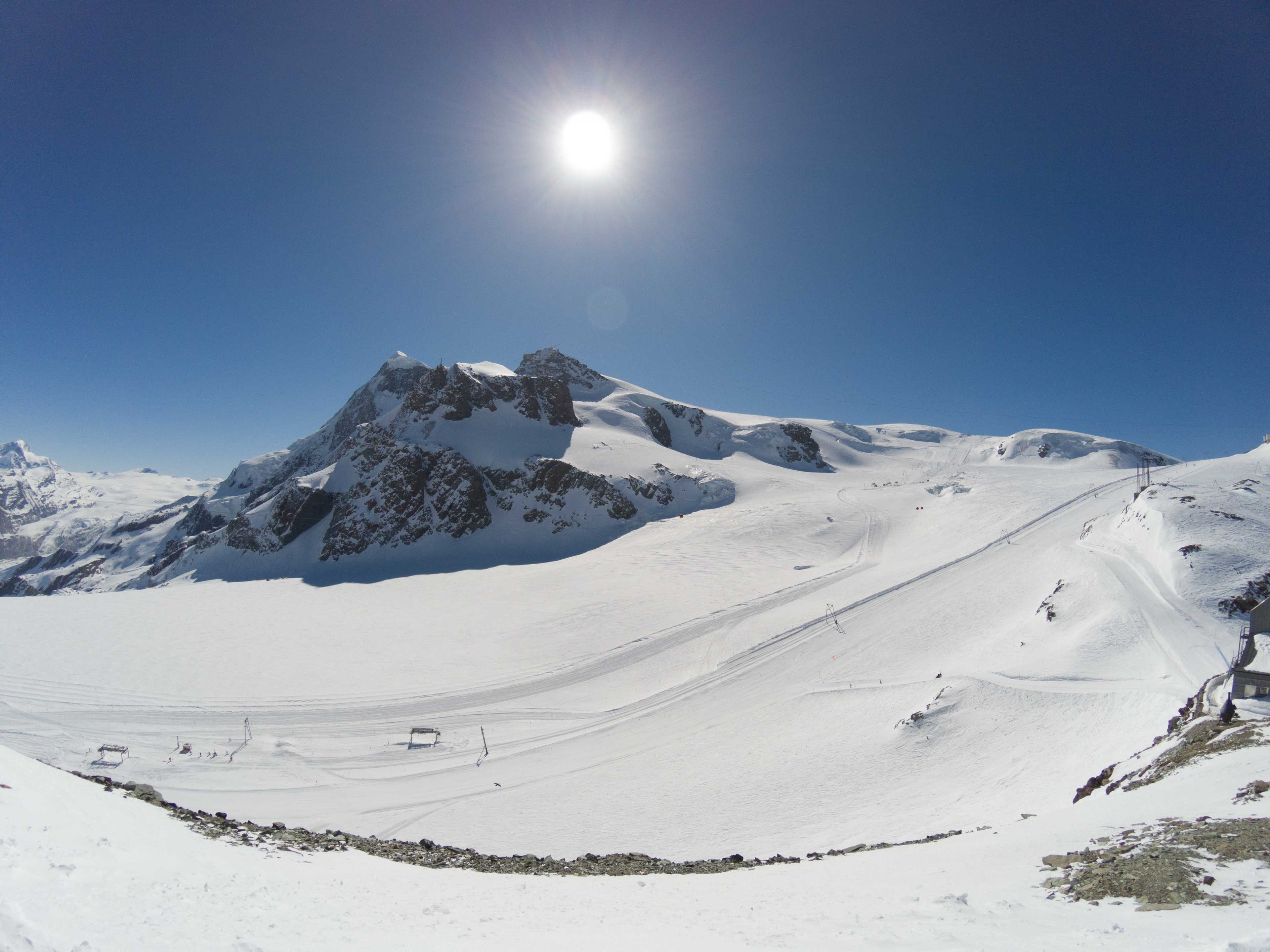
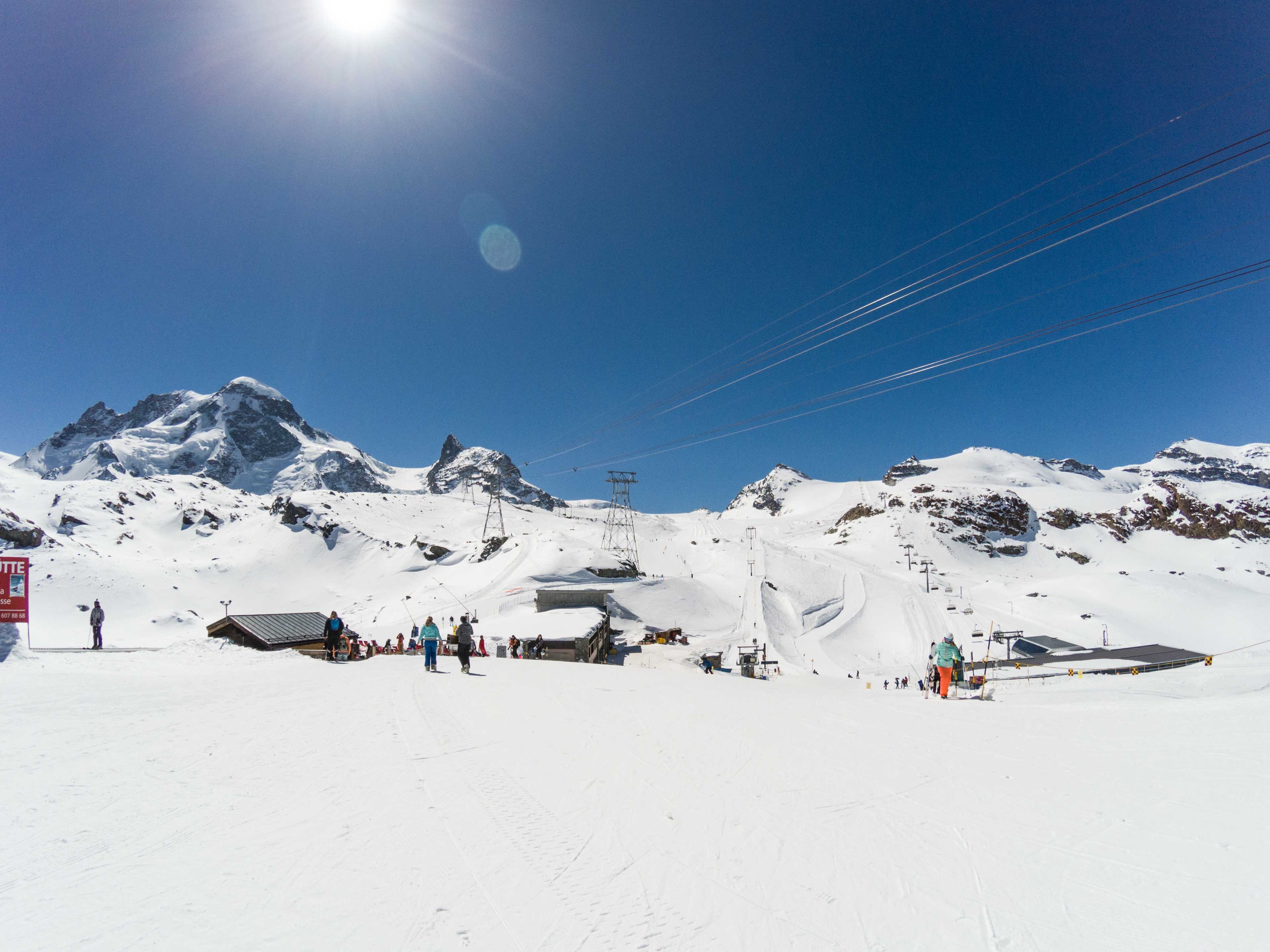
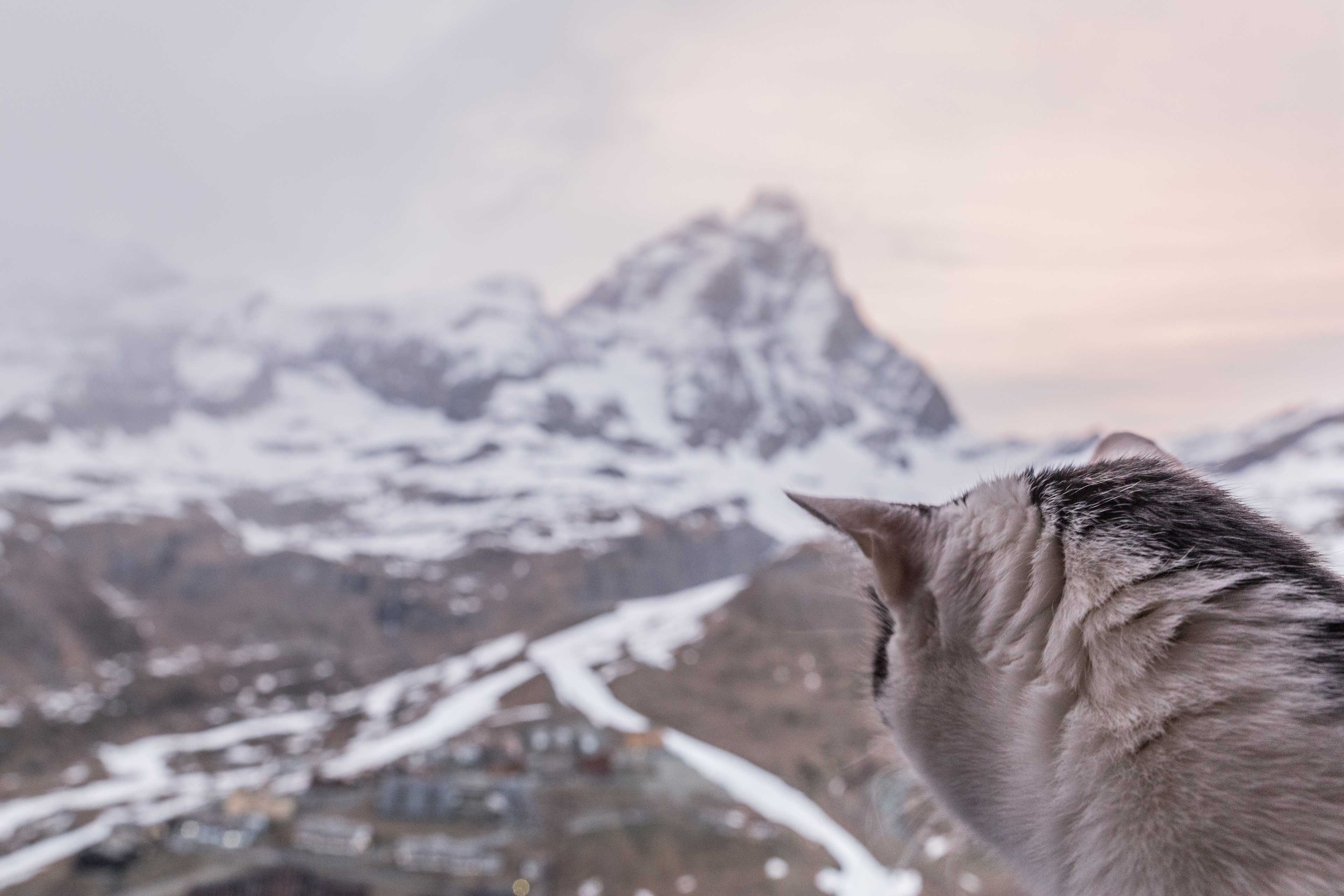
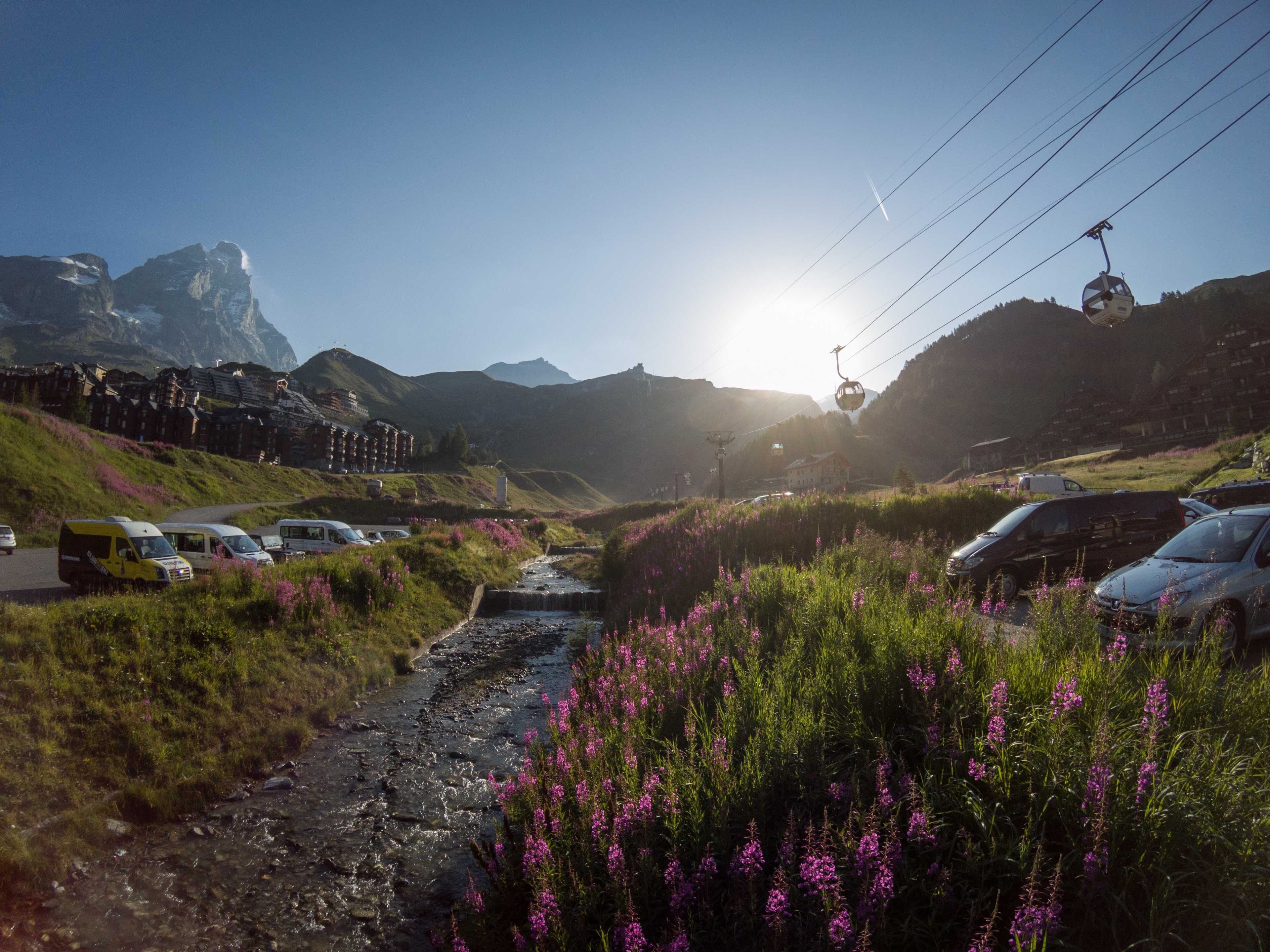
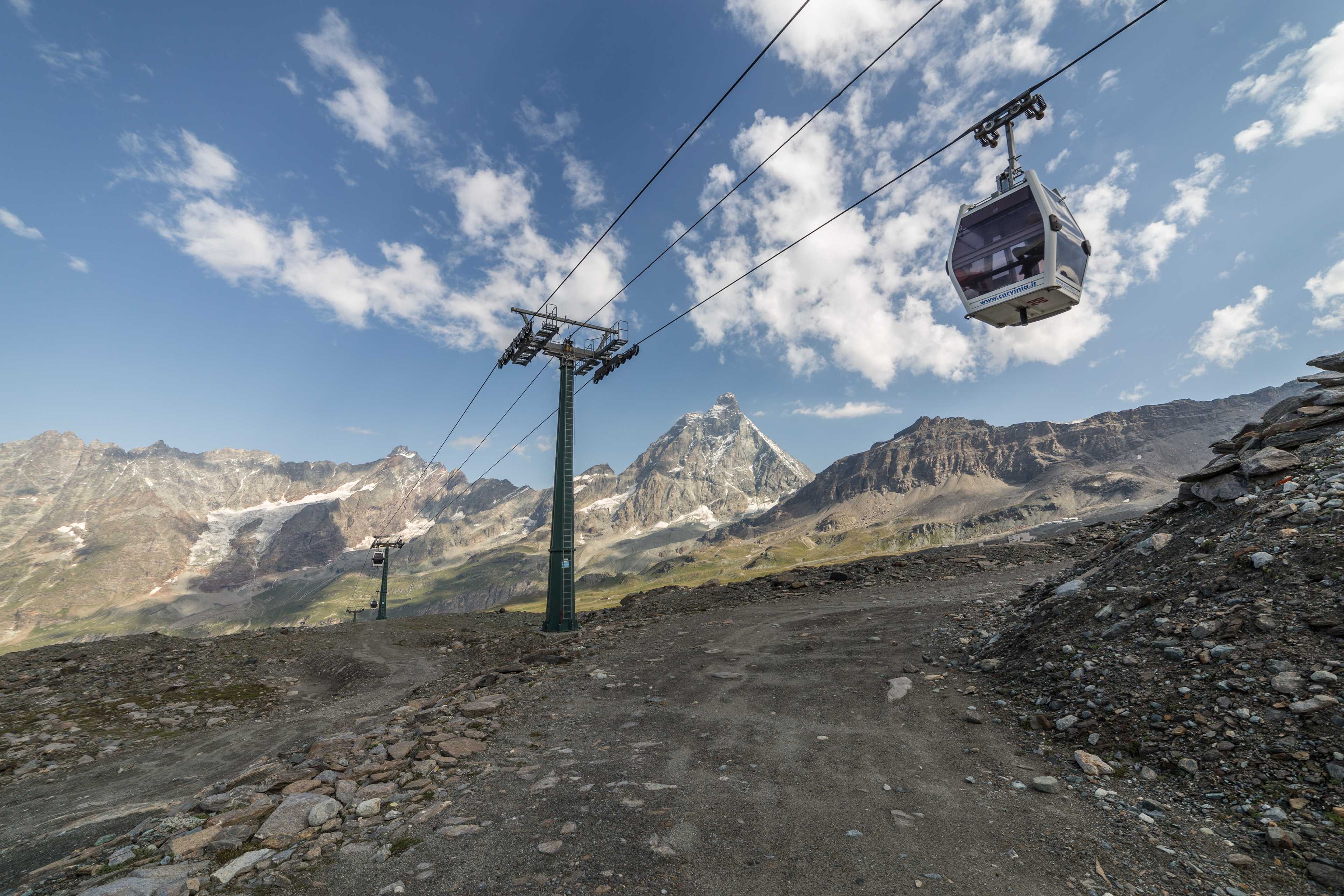
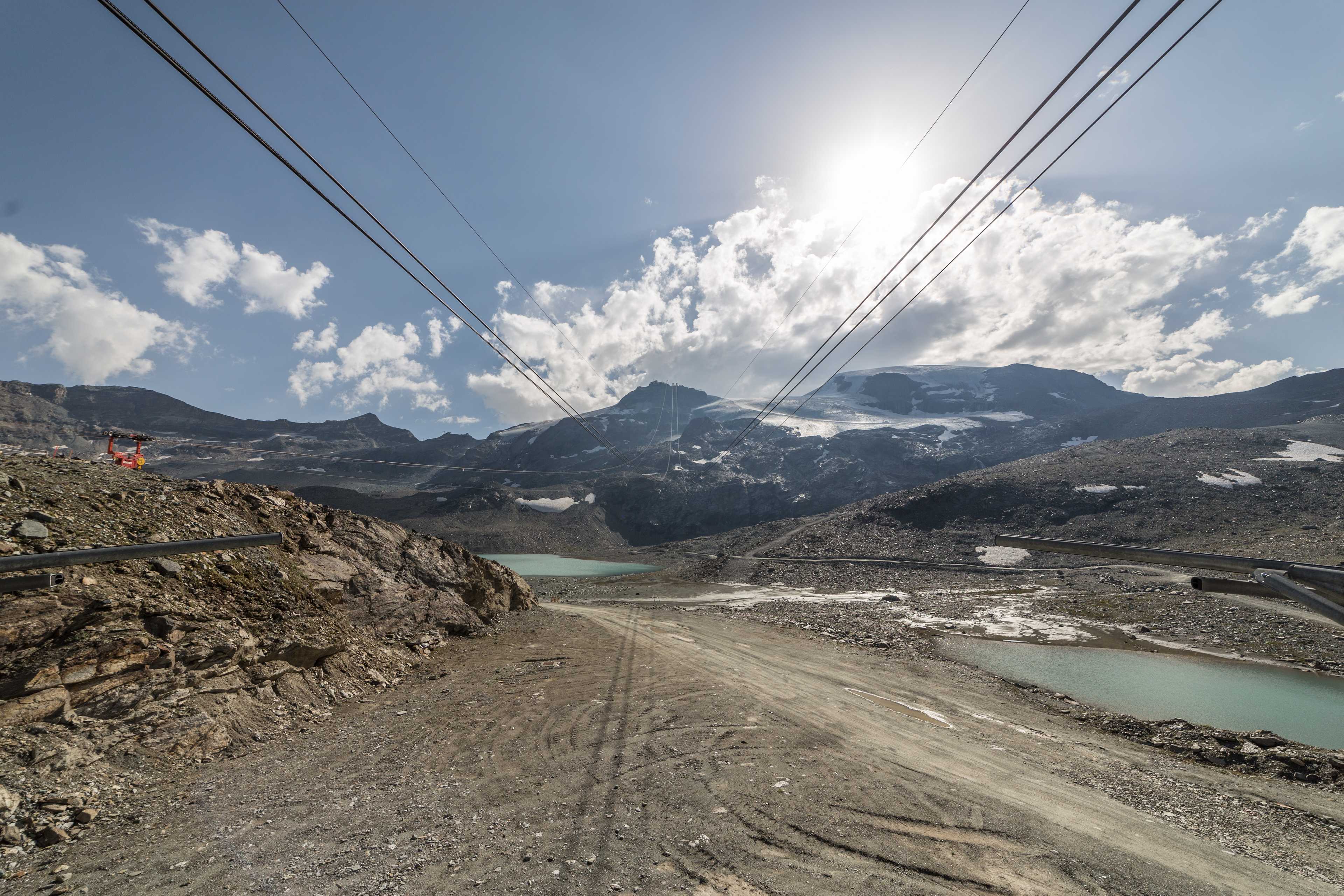
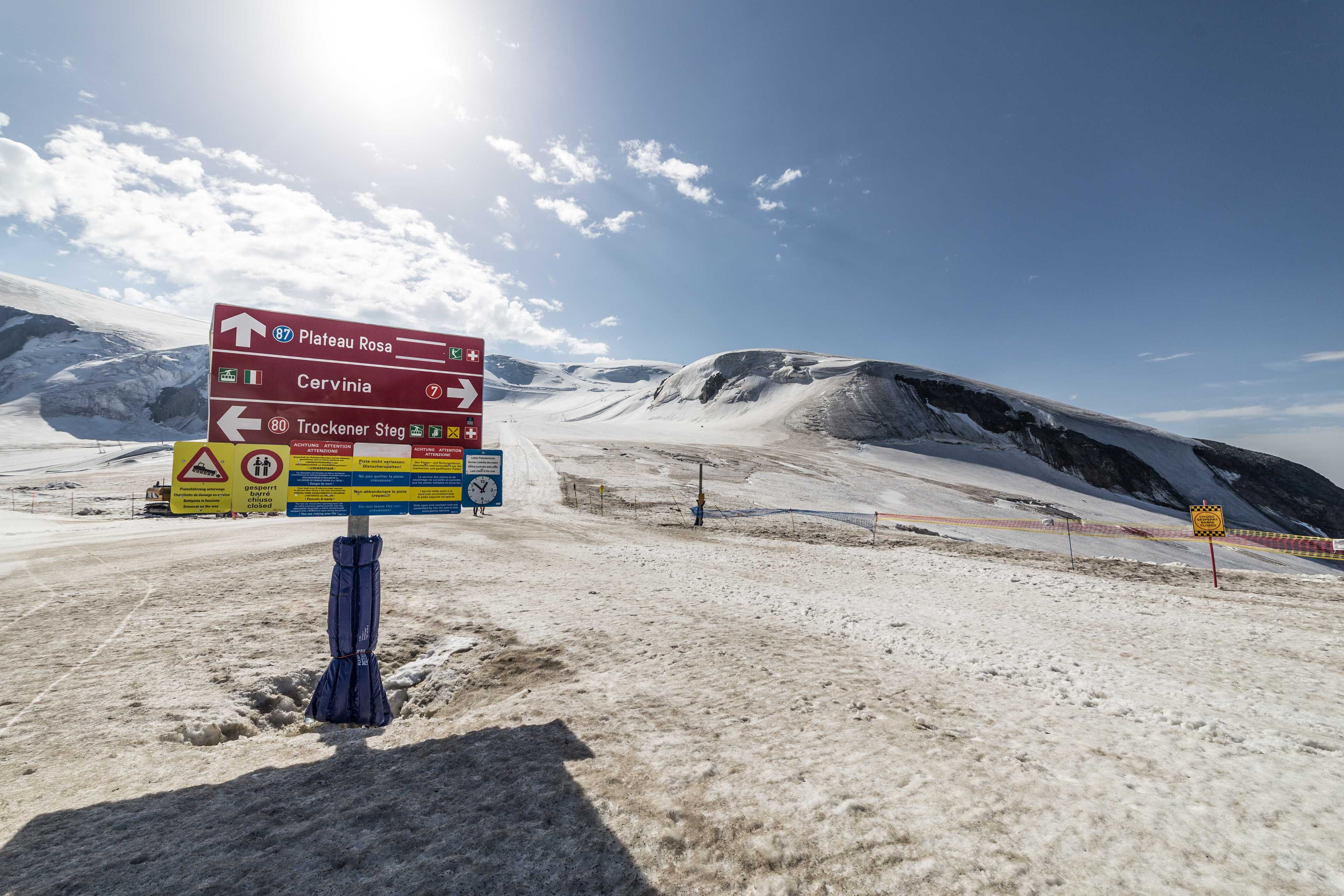
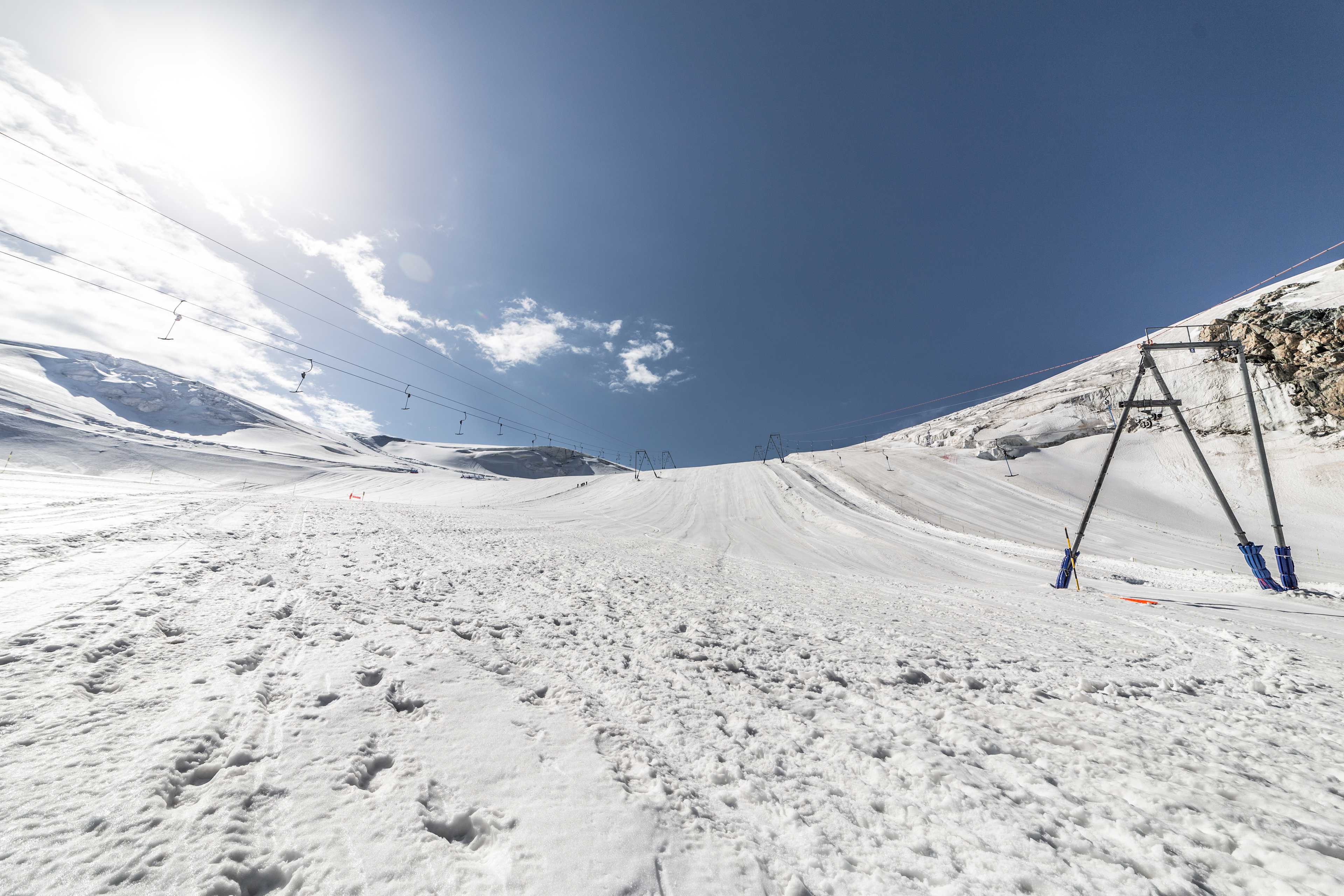
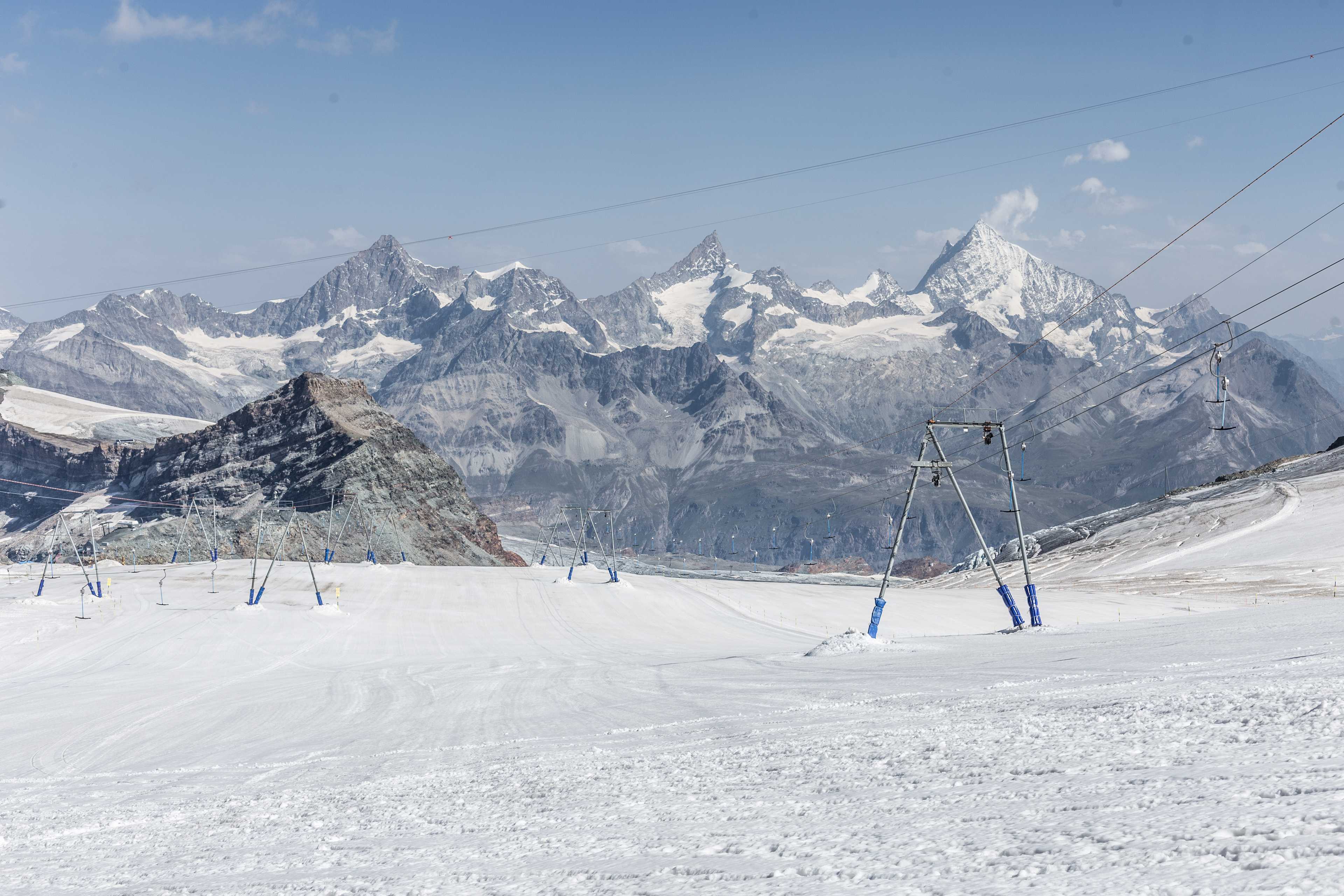
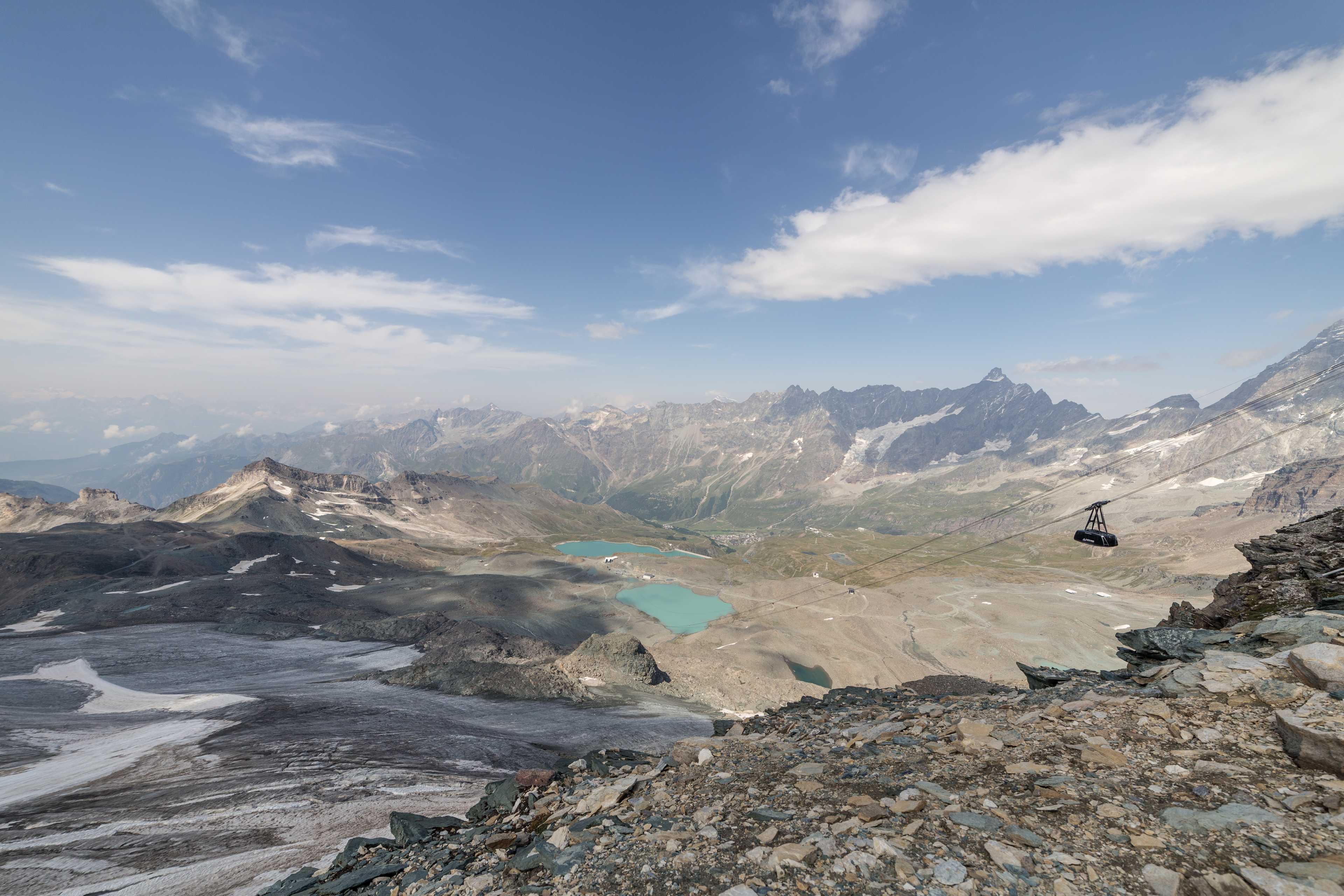
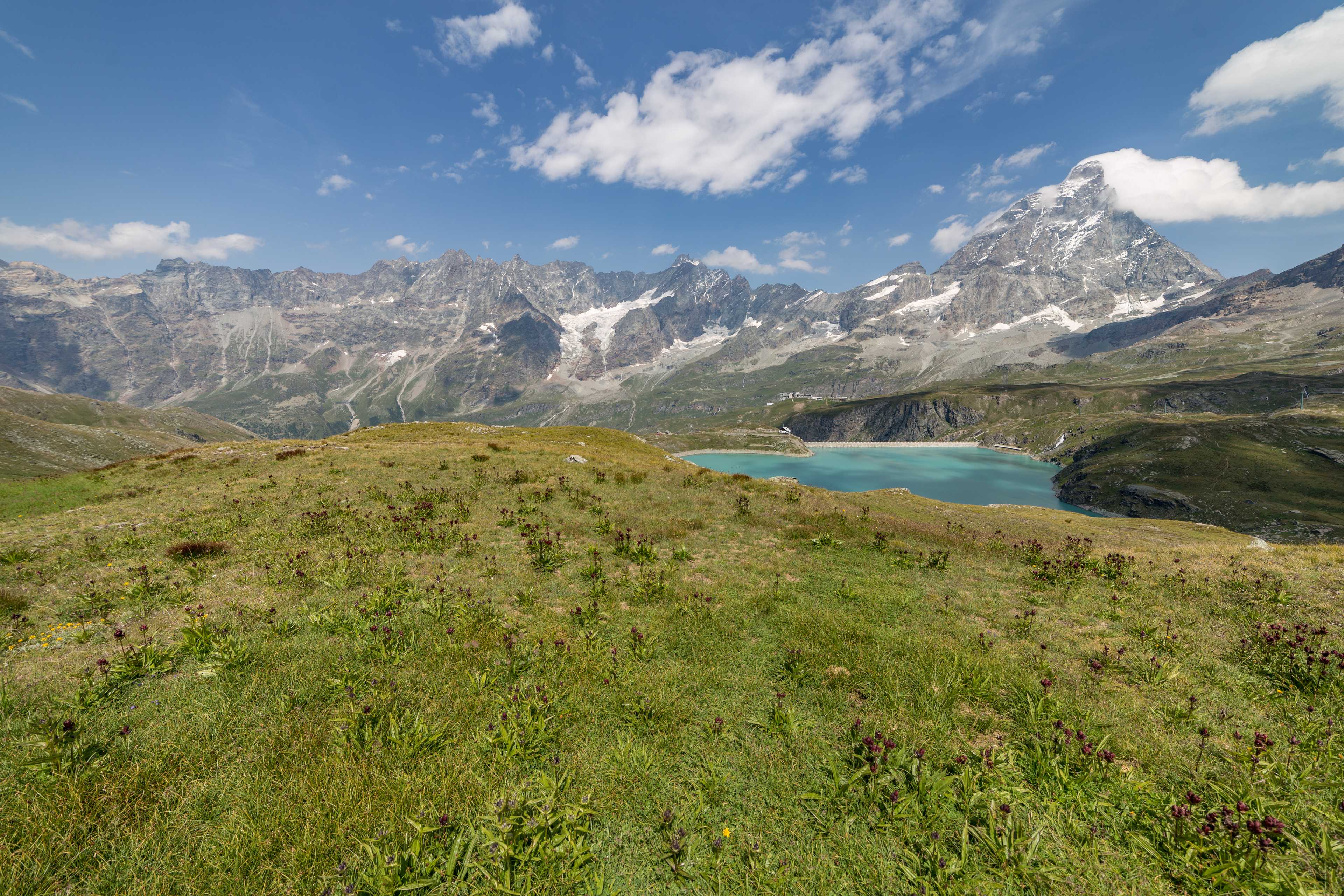
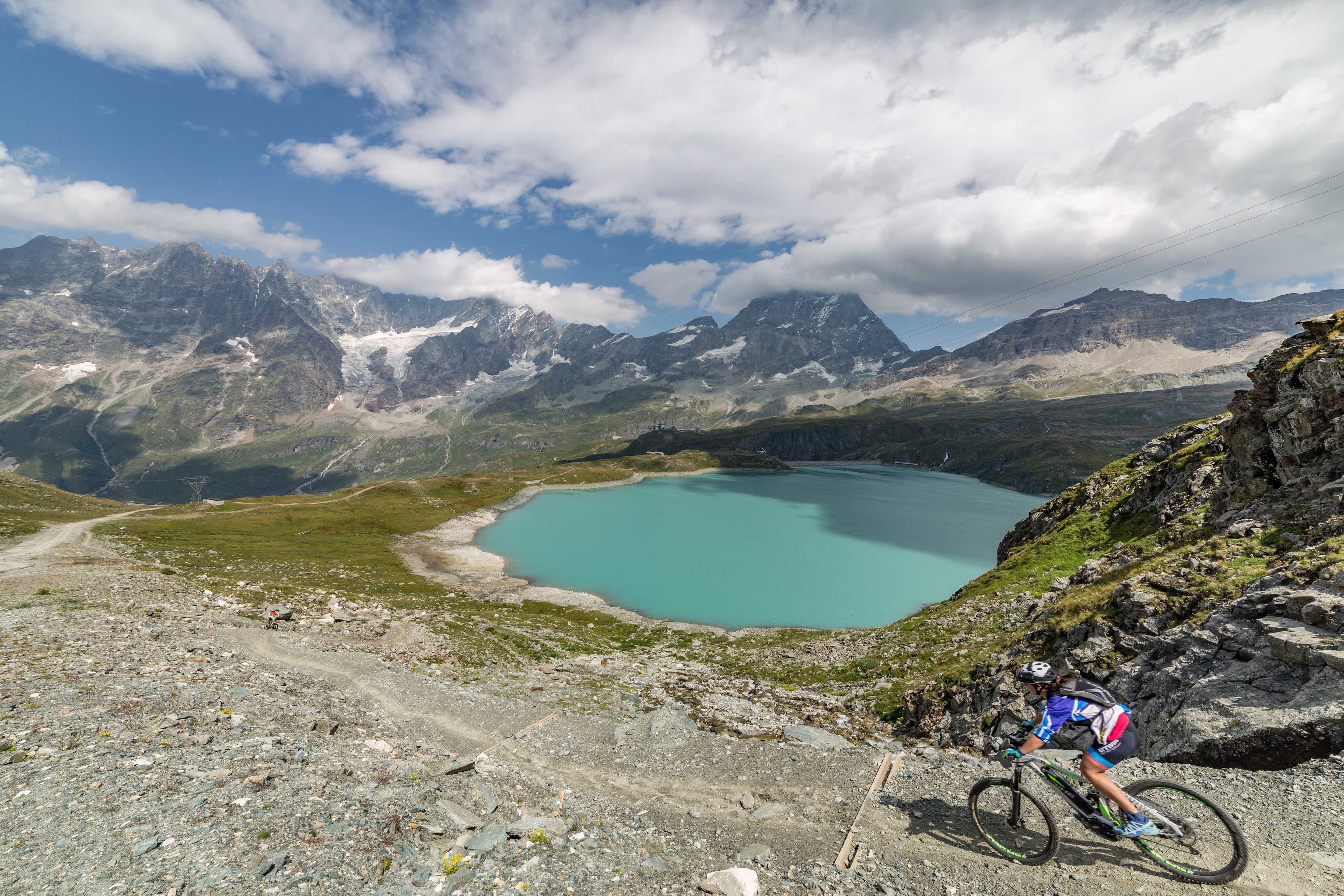
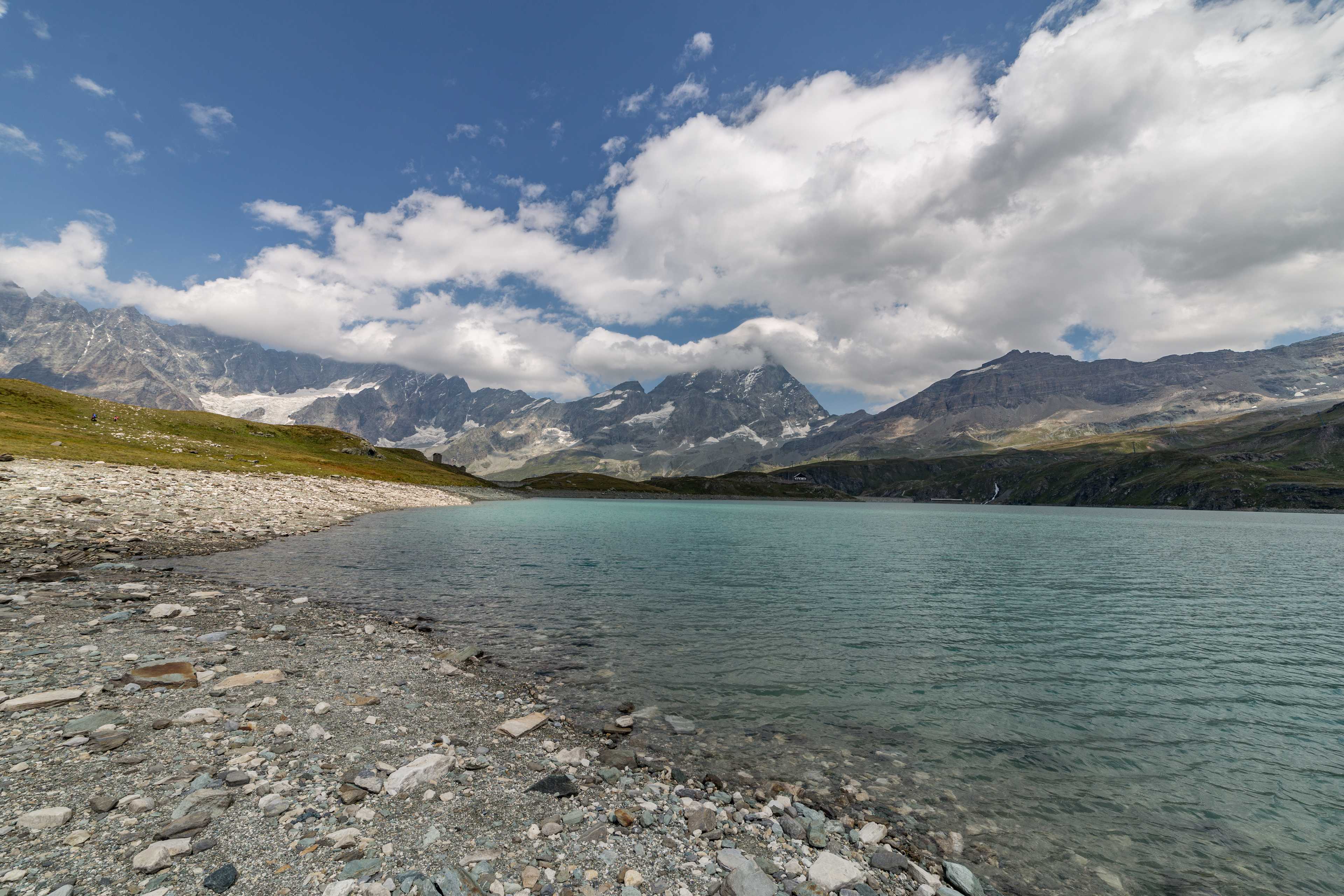
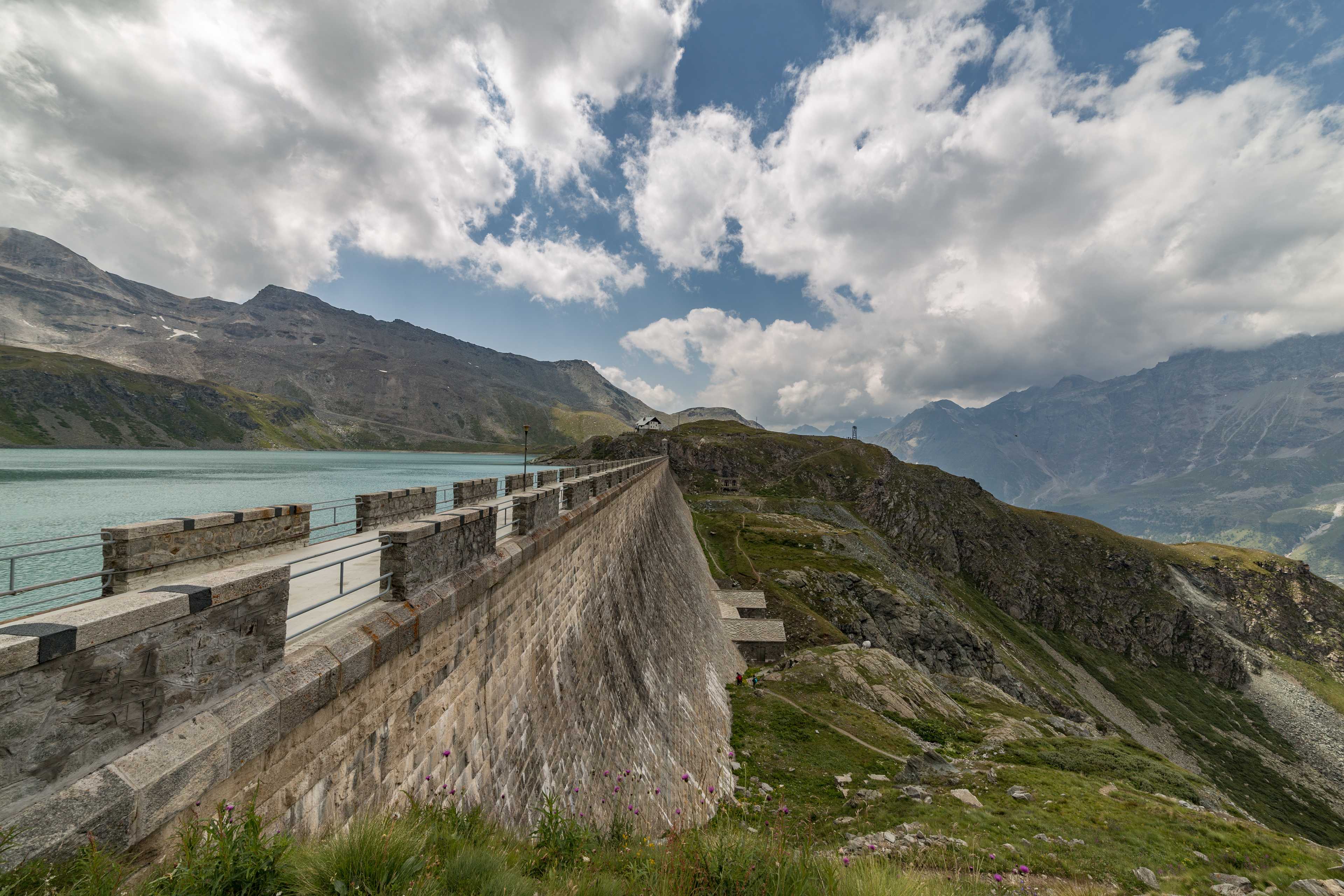
Read also
